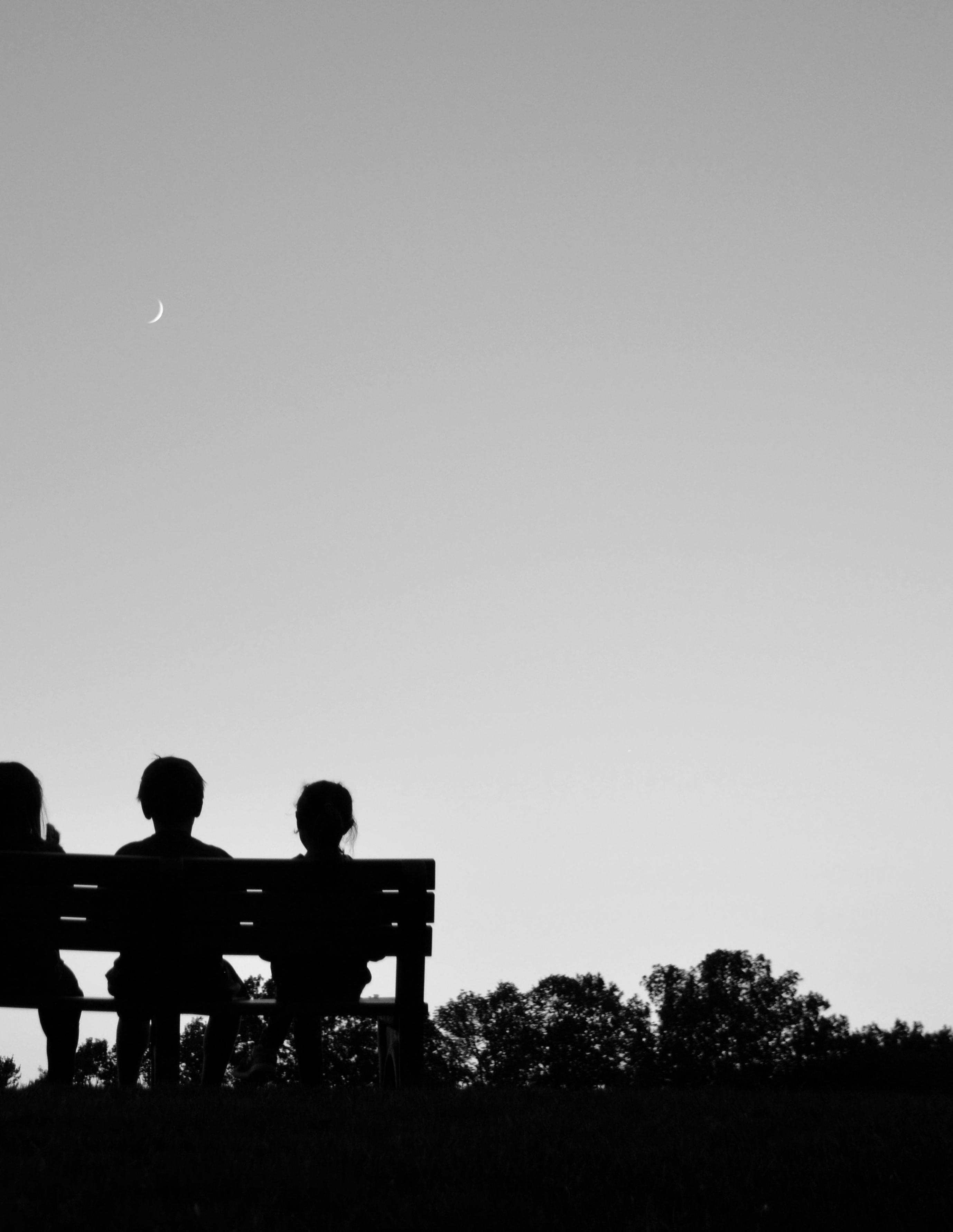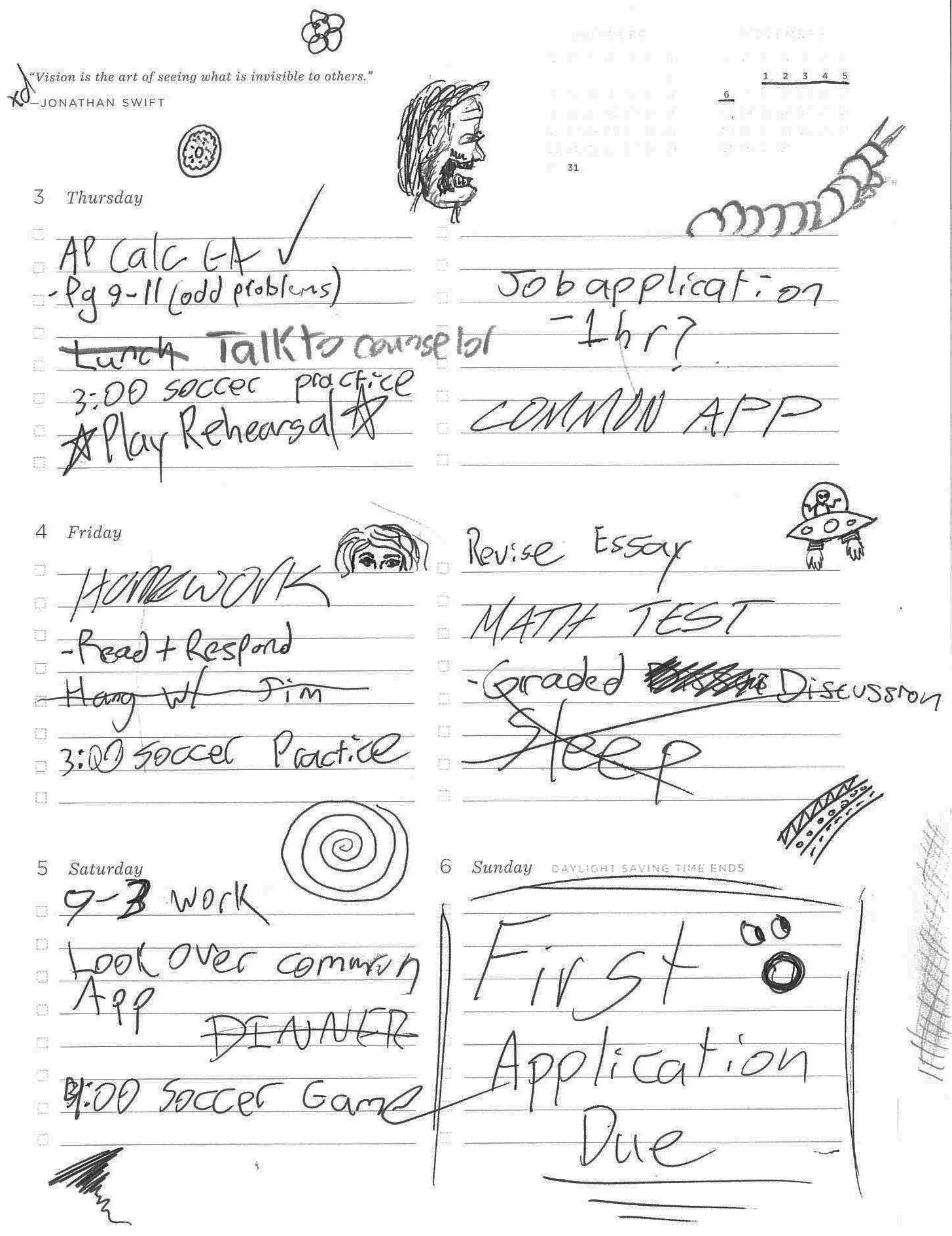




Filippone pg. 6
Invisible pg. 8 Kaepernick pg. 10
New Staff pg. 14 Adele pg. 16
High School pg. 18 Dreams pg. 20 Soggy Po’ Boys pg. 22 Towle pg. 24

Ask MOR pg. 25 Aliens pg. 26 Stress pg. 28 Paricipation pg. 30 College Search pg. 32 Strict Parents pg. 34 UNH pg. 36 Turtle Huntin’ pg. 38

Dear Readers,
This issue is the product of the hard work and dedication of our staff, which began in early September before most students had received their first homework assignment. We’ve worked tirelessly to achieve our goal of representing the voice of the Oyster River High School student body. We’ve also faced some new challenges this year while having the biggest staff in the history of Mr. Kelly, with six returning staff members and twelve new staff members. This isn’t just a normal class; it is not teacher driven. The students are self motivated, and treat their position on the magazine as a job rather than a grade on a transcript.

This quarter we have aimed to create a more professional publication, both in print and online. Our website designer, George Philbrick, has completely overhauled our website in an effort to match the style of our print publication. Web exclusive content includes articles spanning from a profile of Brian Bessette, the founder of Freedom Cafe to coverage of Hillary Clinton and Bernie Sander’s speech on college debt hosted at UNH. To access mor.news scan the QR code in the bottom right corner of this page.
This is the first of four quarterly issues, and we are hoping to continue improving our publication, with a particular focus on formalizing our style and increasing the use of voice in relevant articles. Some examples, specific to this issue, of utilizing a first person narrative are Lydia Concannon’s “Being a Kid”, Dillon Mulhern’s Adele concert experience, and George Philbrick’s “Turtle Huntin’” and “Soggy Po’ Boys.” We hope to continue to improve our use of voice in our articles this year.

The overlying theme for this issue is the stress of being a teenager. This is something relatable to the entire student body. We believe that any student at Oyster River could pick up this issue and find an article that they could relate to. This was something especially important to us in this issue, and we are thrilled that we can finally present it to you. Thank you for your support, and we hope that you enjoy Mouth of the River’s first issue of the 2016-2017 school year. Yours truly,
Find us at Twitter: @MORmagazine Email: mornewspaper@gmail.com Website: Mor.news
 Dillon Mulhern and Andrea Staples Co-Editors in Chief
Dillon Mulhern and Andrea Staples Co-Editors in Chief
Mouth of the River seeks to reliably inform the student body, as well as the surrounding community, of in teresting and newsworthy content in a modern, compelling format. Our goal as a staff is to give a voice to the students of Oyster River, and have it heard by any and all of our readers.
Mouth of the River has been Oyster River High School’s voice since November 1st, 1963. Over the years, it has gotten more and more professional; even transitioning from a newspaper to a magazine. Each year, the staff changes; either students graduate, new students are added, and some are lucky enough to be on the staff for two years in a row. In order to get into MOR, each staff member must pass Journalism I with a B average or higher, and then submit their best work with a written application for consideration. Once they are accepted by Mr. Kelly, the class is then added to their schedule the following year. Here are biographies for this year’s staff to help you get to know them better:
Lydia Concannon (‘17)
Lydia likes to swim and run track and field in the spring. “This is my second year on to Mouth of the River, I really like it because it allows me to have an audience for my writing; it allows me to be a voice for the stu dent body.” Her favorite food is pizza. Her favorite season summer because there is no school. Lydia’s favorite word is flabbergasted.
Andrea Staples (‘17)
Andrea enjoys spending time with her dogs. “I love journalism so much, it is one of my favorite hobbies.” She would love a job in the medical field after attending a summer camp. If she could live anywhere, she’d love to live in the heart of Boston. Andrea’s favorite seasons are summer and fall; she enjoys the beach, but also like the coziness of the fall (plus her birthday is in November!).
Katie likes to run cross country in the fall, play lacrosse in the spring, and ski recreationally in the winter.





“I liked the journalistic style of writing. I’m also taking the advanced writing class, which allows me to write in different styles.” Her favorite food is frozen blueberries. Katie’s favorite season is spring because her birthday is in April.

Anna Kate really likes running, hik ing, and snuggling with her puppy. She joined MOR because she is “really inter ested in journalism” and “loves talking to new people.” Her dream job would be to write for a big news magazine, and be able to travel and explore the world and share it with people. Anna Kate hates feet, and when you can hear peo ple’s music through their headphones.
Betsy cuddles with her rabbit, plays lacrosse, and practices ukulele in her free time. “I wanted to join MOR because I liked idea of being able to give the school a voice.” She finds it annoying when people eat very loudly. Her favorite season is summer since it’s a chance for her to leave Durham.
He is an active cat collector. He currently owns two. He aims to have 67. He sleeps standing up against the wall with his eyes open. “I actual ly signed up for the Essentials of English class, but the Counseling Department messed up and put me in here.” If he could live anywhere, he’d love to live in Denmark. He considers ballet his hidden talent.


Lily is usually doing theatre in her free time, along with playing piano, singing in musicals, seeing her buds, and doing activism work. She joined MOR, “because I wanted to hear what Oyster River has to say.” Lily hates it when people chew loudly, “I hate it so much that I run away when I hear it.” Her favorite food is tofu. Lily can talk with her mouth closed, and can sing Queen’s Bohemian Rhapsody word for word.
Thomas likes to hike (enjoys any thing outdoors), and he is an amateur professional surfer. “ MOR sounded interesting and I like how it’s run by students… Dillon threatened to hit me if I didn’t join.” His dream job is to be an ice cream taste tester. He doesn’t like it when people talk with food in their mouth.

In Jane’s free time, she enjoys drawing, photography, traveling, and horseback riding. “I’d heard a lot of good things about [ MOR]; I wanted the opportunity to publish my work and I wanted to work with other students who had a strong focus on journalism.” Her dream jobs are National Geographic photographer, creative director at a fash ion company, or an entrepreneur.

Jess enjoys cooking, photography, hanging out with friends, and watching movies. “I wanted to be on Mouth of the River ever since my freshmen year; I thought it was the coolest thing seeing students publish such creative and pro fessional work.” If she could live any where in the world, she’d love to live in London or Boston. A secret talent Jess has is that she is very good at memoriz ing lyrics, and she likes to sing.


Zach enjoys watching sports, play ing soccer and hockey, bowling, and talking with his dad. “I think MOR is a great publication where students can write about topics that would interest their peers.” His dream job is a sports announcer. “My pet peeve is when people try to veto reasonable trades in fantasy football.” Zach’s favorite food are quality, homemade chocolate chip cookies.
In her free time, Skye is most likely to be found at drama rehearsals. “I’ve always read MOR in the past and I loved how professional it was. I love journal ism and it’s something I definitely want to pursue in my life. MOR was always a goal of mine.” Skye’s favorite food is lobster. She says her secret talent would be drumming, but it’s not really a secret.
Libby runs cross country, and enjoys listening to music. “I think [ MOR] is a fun class that gives you opportunities that you would not have in other classes.”


She would like to live in Ireland someday because she’d fit in there with her red hair. Her secret talent is rapping; she likes to do it when she’s in the car.

In his free time, George reads, writes, sails, and plays video and board games. “I wanted to be on MOR because I enjoy journalistic (and all) writing. I like to try to find stories. Digging things up is fun.”
His pet peeve includes people who are lazy, since it affects those other than them selves. A couple talents include program ming and game design. George wants to be a video game programmer, and start his own gaming company.
Megan likes running cross coun try, reading books, practicing violin, and hanging out with friends in her free time. “I had heard some really great things [about MOR] from members like Neville Caulfield and Isabelle Todd. I really liked journal ism one.” She really hates it when teachers erase everything on the board except for one small section of marker. She would love to live on Redondo Beach in California.
Owen plays soccer, fishes, and explores the outdoors. He wanted to be on MOR because, “I really liked the business aspect of MOR; it’s more than a class.” His dream job is anything that makes millions. Owen’s favorite food is spaghetti carbonara. He likes the fall because “everything is better in the fall.”

In Spencer’s free time, he plays golf and fantasy football. “I guess I wanted to be on Mouth of the River because it’s a really cool and unique class. I like the idea of spreading news to the student body while showcasing people’s writing abili ties.” His dream job is to be a golf course architect. His secret talent is that he’s a world class fisherman. His pet peeve is when people do not properly manage their fantasy football team.

“When the job was posted I thought ‘This is great! How can I not apply to this?’ This is the town we live in and it is an opportunity for me to give back to the community,” says Suzanne Filippone, the new principal at Oyster River High School.

Filippone started as principal of ORHS at the beginning of the 2016-2017 school year. Former principal, Todd Al
len, took a job as Assistant Superintendent of the Oyster River School District, meaning somebody would have to step up as the new principal. Filippone was just that per son.
Filippone is familiar with the Oyster River community as she grew up in Lee where she attended Mast Way Ele mentary School. She then went on to attend Oyster River
Middle School and was a student at ORHS for two years.
Filippone started her teaching career in 1997 at Somer sworth Middle School, where she taught for a year before the school experienced layoffs and she was left to find an other job.
After Somersworth, Filippone was hired at Berwick Academy where she spent ten years teaching. She taught humanities at Berwick Middle School for five years before transitioning to Berwick Academy High School where she taught history. Throughout her time at Berwick, Filippone was very active in the school. She was an advisor for year book and helped with college counseling for the students. She also coached both girls lacrosse and soccer.
After her time at Berwick, Filippone and her family moved out to New York for her husband’s job. Soon after moving, she was hired at the Doane Stuart School, a small private school in Syracuse, New York where she was a half-time teacher and a half-time dean of students. After teaching for many years as a teacher, she was able to be exposed to the administrative side of school. “That was really fun for me to do both and I really liked the administrative side of that. So when we moved back to the area...I had to make some decisions about what I was going to do—was I go ing to go back to teaching or was I going to be go ing into school administration?” says Filippone.
When Filippone and her family decided to move back to the Durham area she had a difficult decision to make about what she wanted to do.
She was then hired as Assistant Principal at Spaulding High School in Rochester and had worked there for the past three years. Filippone reflected positively on her experi ence there, stating, “I think [my time at Spaulding] taught me a lot. It was a big school and I had a lot of responsibil ities there. When you are an administrator you work with faculty in a very different kind of way. Your job is really to support them and to try do what you can to help. It’s dif ferent because when you’re a colleague you are supporting each other, but when you are an administrator there are some new dynamics there. That was really helpful and I really enjoyed that.”
When the position was posted for principal at ORHS, Filippone was just one of many applicants who was involved in the application process. “Oyster River was looking for a person with experience and someone who had a proven track record for student advocacy. We were looking for a candidate who could communicate effectively on behalf of ORHS. We also felt it important that the candidate not only understand high schools, but have experience in the middle and elementary levels. Finally we were looking for the candidate that would complement the team of excellent
administrators in the ORCSD,” says Oyster River Superin tendent James Morse.
“The hiring process involved a broad committee that in cluded teachers, parents, school board members, students and school administrators. As a committee we were look ing for someone who had a good understanding of what it takes to be an excellent 21st century high school,” adds Todd Allen.
Filippone stood out as a strong candidate from the start as she has extensive experience in both education and well as administration.
“I was on the principal search committee as the student representative. I thought she would fit in really well with the dynamic that Oyster River has. [She] would immerse herself the best to help Oyster River grow,” mentioned Car oline Wilson, (‘17)
When Filippone was offered the position, she didn’t ar rive with any specific precedent ideas, but now that she has been hired, she really hopes to contribute to the growth of the high school. She also hopes to allow students at ORHS more opportunities to learn.
“One things that the district is working on, that I worked on at Spauld ing that I real ly believe in is the Extended Learning Op portunity policy which is to give students more opportunities and pathways for learning,” says Filippone.
Although Filippone arrived with no intention of changing the high school dramatically, she did arrive with goals for herself as the new principal at the high school.
“For me, my biggest goal this year is to just try to listen and learn as much as I possibly can and try to learn as many names as I possibly can,” says Filippone.
This year is the ‘year of the responsible citizen’ at ORHS, meaning students will be especially encouraged this year to be good community members. Filippone has some ideas for how to really achieve that title for the students at ORHS.
“There is one thing that I really want to focus on [for year of the responsible citizen] I really want to get some community service into the school. And I don’t know what that would look like, or how that would work, I just think that it would be great to get kids at Oyster River out into the community,” says Filippone, “And that’s part of being a responsible citizen, giving back to the community.”
She also has a strong connection to ORMS, as she has two kids enrolled there. She hopes to stay actively involved in the school district, as well as use this job to take on new experiences.
“Every year I try to do something different. Like this year I tried surfing lessons. I don’t like to stay in my comfort zone all the time,” says Filippone.
“For me, my biggest goal this year is to just try to listen and learn as much as I possibly can and try to learn as many names as I possibly can,”
“It’s funny how you’re surrounded by people you think you can trust. All of my “friends” aren’t really my friends. I post pictures with them but they all make me feel invisible”
You would think a small community such as Durham wouldn’t have students who feel like their voice isn’t heard, like they aren’t important in our community. Durham is perceived as a place where parents treat other kids like their own. A place where anyone and everyone knows each other, except recently, the Behavior Risk Survey that was completed at Oyster River High School reported that approximately 75% of the student body feels like their voice isn’t heard, whether with their parents or in the halls of our school. The context of this report could be taken in several ways, but the overlying issue remains. How has our community developed an environment where only 25% of students feel noticed?
There are approximately 800 students who attend ORHS - if these statistics are entirely accurate, then that means 600 students feel “invisible”. If you break down this statistic into grade levels, that shows 150 students who feel in invisible in each grade. When did this problem start? Has it always been here?
The idea of high school cliques has always been pub licized - whether in movies or TV shows the “popular”
group has always run the school. Is this stereotype true? When an anonymous source, who we’ll call Sharon, was asked if she thought students at ORHS acted exclusive, she responded: “People don’t branch out from cliques in class, which iso lates a lot of students. I know that personally, when I see some one that is left out of a conversation in class, I try to make them feel welcome to join, but honestly, most people don’t do that.”
Another anonymous source, who we’ll call Sal- ly, goes on to say: “If you’re not in the popular crowd or [if you] don’t have the prettiest face in the hallway, you’re just pushed aside and forgotten about.”


Sally describes herself as an outgoing individual who tries to fight against the judgement of others. “[I] try to ignore the negative things people throw around while [I’m] trying to express myself. For some people it’s harder to know that others are judging them, and it makes them not want to be here.”
Is there anything we can do to make our students feel more ac- cepted in our community? Mark Millik en, ORHS Dean of Stu- dents, explains: “This is a typ
“If you’re not in the popular crowd or don’t have the prettiest face in the hallway, you’re just pushed aside and forgotten about”
ical problem in high school. Every- one wants to feel like they belong, but this is exaggerated in highschool. I think we need to talk about it more in order to address it.”
Milliken also continued to discuss how on the flip side we have made progress in unifying the grades. He men- tioned that the responsible citizen points awarded during spirit week helped unify the grades, along with the changes in col or during spirit day. The school board is also working on es tablishing a school council, different from the student council, where all types of students, as well as teachers and admin istrators, can come together and discuss issues in ORHS.
However, Sally believes that there is nothing the school can do itself, and that it’s unlikely the circumstances will ever change. “People don’t grow up until they get out of high school and realize that being a mean person does not get you anywhere. It all happens as a part of growing up,” she says,:“It’s all about the student body coming together and realizing that we’re about to leave the people who have helped shape us.”
You would think having such a small school would unite
the student body, but has it segregated us more? Another anonymous source, who we’ll call Carol, attends Dover High School which is much larger than ours in size. With the grade level size approximately 400, Carol explains that the cliques aren’t as dominant. “I really like DHS because there are so many students that it’s difficult for cliques to form. You obviously can dictate who’s considered popular or unpopular, but because we have so many students, we have to account for that by having a lot more classes. Because of this, it’s unlikely you’ll have classes with a lot of your friends, so you learn to make new friends all the time. You’re never limited to one type of person; there’s a variety all around you constantly.”
Sally explains that this type of variety isn’t as prominent at ORHS saying, “It’s hard because our school over- all has a certain stereotype; everyone tries to seem well-off and put together, whether it’s by dressing like you’re part of a yacht club for guys, or dressing like you’re a fashion- ista for girls. This pressure is hard, because if you can’t af- ford clothes like this, you feel unnoticed and like an outsider.”

 - Andrea Staples
- Andrea Staples
San Francisco 49ers’ quarterback Colin Kaepernick has been the center of attention in one of the most covered stories this fall. It began on August 26th, when the former face of the franchise and current backup re fused to stand for the national anthem prior to the 49ers’ third of four preseason games. Kaepernick sat on the bench as the other seventy thousand people in Levi’s Stadium rose to their feet as usual. Since this game, Kaepernick has decided to take a knee during the national anthem of every game his team has participated in.
Kaepernick, who is of mixed race but was raised by white parents, has expressed that he does this in order “to stand up for people that are oppressed.” Kaepernick told reporters in a post-game interview, “I am not going to stand up to show pride in a flag for a country that oppresses black people and people of color...To me, this is bigger than football and it would be selfish on my part to look the other way.” Despite the overwhelming criticism and attacks stating that Kaepernick is anti-American and anti-military, there has also been an equal amount of support for the sixth year NFL player, as many other athletes in the past few months have also chosen to take a knee during the national anthem. Along with a handful of other NFL play ers, college and high school athletes, US women’s soccer star Megan Rapinoe, who is white, also chose to take a knee during a national team match against Thailand on September 18th. Many athletes have also chosen to raise their fists in a form of protest during the national anthem, a gesture that is also often used in Black Lives Matter demonstrations.
As this story has been so significant across the country, I wonder: what would our school’s reaction be if one of our student-athletes decided to do something similar?
There were mixed reactions among Oyster River High School’s students, coaches, and faculty on the potential situa tion, as well as on the relevance of the subject in a state where only one percent of the population is African-American.
“I think I would choose to support [taking a knee] depend ing on who was doing it,” said one student, while others said that “Kaepernick’s issues aren’t really seen here,” and that “black oppression and the national anthem have no relation.” Multiple students proclaimed that Kaepernick’s protests would just look “even dumber than they already are” if they were to be seen in an even more predominantly-white commu nity.
A large part of the fact that Kaepernick has received so much support from other players within the NFL may be because the issue is more impactful to the lives of a large por
tion of players, as the league is comprised of seventy percent black players, according to The Huffington Post article 70 Percent Of NFL Players Are Black Men. Colin Kaepernick Should Be Praised, Not Condemned . A few of the students said they wouldn’t support a protest like this at ORHS because they don’t notice this issue around the area at all, and it wouldn’t mean anything to protest for people in other areas across the country in the setting of a high school sports game.
Dean of Faculty Mark Milliken says he wouldn’t want students to do any such thing. “You can be against something, but do it with respect to the country and institution in which you live,” said Milliken. “I think you can bring about change, but still do it in a respectful way. I would definitely have a conversation [with a student if they did that].” Milliken noted that he wasn’t opposed to the topic in which Kaepernick and other athletes are protesting, but to how they are doing it.
“I don’t agree with the idea of not standing for the nation al anthem,” says boys’ soccer captain Anson Thibault (‘17), “especially with what our military does by risking their lives for us. It’s disrespectful to not honor our military, but I would have to respect if one of my teammates did it because we have the right to freedom of speech.” Fellow ORHS senior and student-athlete Josh Bram ble had a conflicting viewpoint to Thibault. “I think people should take a stand on whatever they want to if it’s a just cause,” he said. “As a black guy, I agree with what Kaepernick is doing completely.”
Of students who did say they would support a national anthem protest at ORHS, more said they would support it because of the ‘constitutional right’ to take a knee, rather than because of the cause itself.

Boys’ soccer coach Charlie Crull says he wouldn’t want to interfere with one of his players not standing for the anthem if the administration approved it. “We would have to sit down and discuss what he was trying to accomplish,” says Crull, “but if administration [was okay with it], I would be good to go with it.”
Girls’ basketball coach Don Maynard, noted that nation al anthem protesting was a topic he felt especially strongly about. “There has got to be a better way to draw attention to [black’s] struggle than taking a knee for the national an them,” he said. “If you’re an American, you show respect to the flag. If you don’t have any [American] pride, there are other countries.”
Of the sixty students I spoke with, about half said they would support a fellow peer if they protested the national anthem for a similar cause to Kaepernick’s and others’, while about half said they would not support them.
- Zach Leichtman
It is these six words that are printed across the back of the Oyster River cross country team shirts, followed by a long list of successful finishes at the state and regional level. The cross country team has built a strong reputation of success, with a total of 18 state championships throughout the program, seven belonging to the boys’ team, and 11 from the girls’ team.
For over 20 years, veteran coach Greg Gephart was an inte gral part in building that reputation, winning four state champi onships as the boys’ coach, as well as several runner-up finishes. “Greg was loved by everyone on the team. We were sad to see him go but we were very fortunate to have everything work out with the new coach,” says team captain Patrick O’Brien (‘17). This year, the new man at the helm is Scott McGrath. “We couldn’t have found a better candidate than coach McGrath,” says ORHS Ath letic Director Corey Parker. “[McGrath] is extremely qualified and a dedicated runner himself, and I think the kids have adapted to his coaching style really smoothly.”
McGrath is an accomplished runner, winning the 2003 Class II individual state championship at ConVal High School in Peter borough, New Hampshire. In addition to his individual success, McGrath’s ConVal team either won or finished runner up at the state meet in each of his four years at the school. While at ConVal, McGrath’s teammates nicknamed him “Bloodbath McGrath” due to his notoriously intense workouts.
“Everyone is working a little bit harder under Coach McGrath,” O’Brien states. “I think it’s going to make our team deeper. We’ll have a really strong varsity team and a really strong JV team.” When any team has a coaching change, there is usually a change in the team’s mentality. With the addition of Coach McGrath, the cross country team has absorbed some of his hardworking person ality, and in turn, they are beginning to see results.
According to newhampshirecrosscountry.com, Oyster River is ranked as the second best team in Division II at the time of writ ing this article. However, “it seems like every race we have one of
our better runners not running,” states Max Stenslie (‘18). “It ends up preventing us from winning as much as we want to, but it also allows guys to rest.” Coach McGrath has been working with his runners and managing their schedules in an effort to have them peak later in the season, during the most important time of the year. Even without three of their strongest runners, the team was able to win their meet at Hol lis-Brookline, which is a testament to the depth of this year’s group.
One reason for this depth is McGrath’s unique training style. Aside from emphasizing working hard, McGrath has been working on an in-
dividual level with each of his runners. “We make it a point to scaffold the training based on prior experience and what kinds of workouts ben efit each runner,” McGrath says.
Coach McGrath prioritizes the health of his runners, doing every thing he can to prevent injuries. “He’s been emphasizing stretching af ter runs, which is a new thing this year,” Stenslie says. During a “work out” practice, the team run laps around the track, with each lap having a different target pace; one lap would be run at full speed, another at half speed, etc. McGrath makes sure his runners warm up before their intense workout, as well as cool down after.
“So many sports use running as a form of punishment, whereas cross country is running,” states McGrath. Since it is such a work-intensive and exhausting sport, the team atmosphere of cross country is different than any other. The team makes sure to have fun together when they’re not running. “We all suffer together, which brings us closer together as a team,” says Myles Carico (‘20).
As they begin to prepare for the postseason, the team is feeling con fident in their ability to perform well. Their goals are to win the state championship and qualify for New Englands. “I think we are going to surprise people,” Stenslie says.
“So many sports use running as a form of punishment, whereas cross country is running”
- Scott McGrath
University of New Hampshire Men’s Soccer coach and Oyster River alum (‘99) Marc Hubbard claims it only took twenty minutes of practice to realize that Jack Dickson could have an immediate impact on the team.

A freshman from Bournemouth, England, Dickson had never even visited the University before committing to play soccer there. Coach Hubbard had never seen him play live either, but a few highlight videos and Skype calls with Dickson were enough to offer him a spot on the team. “It’s a gamble for sure [to offer a spot for] an international guy,” said Hubbard. “You never really know how they are going to translate to the college en vironment, and general life.”
Dickson never imagined himself playing in the Unit ed States until recently. After being dropped from the Bournemouth Football Club (Premier League) Academy in 2013, he started played low-level professional soccer with nearby club team Poole Town F.C. who play in En gland’s sixth-division. “While I was playing for Poole Town, I heard about coming to the US [to play],” says Dickson, who wasn’t entirely happy with the way things
were going in England. “I was debating whether to stay in England, and try my luck there, but we weren’t train ing every day, the facilities out here are much better, and obviously coming here to study at University the life ex perience is great as well.”
Dickson is one of ten international players for the Wildcats men’s soccer team, most of whom were recruit ed by Hubbard, who is in his second season in the head coach role for UNH. Hubbard has plenty of experience with both domestic and international recruiting, as he was head coach for 2013 NCAA DII champions Southern New Hampshire University for seven years, compiling a 117-20-6 (wins-losses-ties) record in that time peri od. Last year was Hubbard’s first as the head coach for UNH, returning from SNHU after serving as an assis tant coach of UNH from 2003 to 2007. Since taking the new role, Hubbard and his staff have looked to specialize and grow the brand of the program. “I’ve seen a notice able difference in UNH soccer since Hubbard became coach,” says ORHS soccer player Nate Moore. “They at tack so much more than they used to, and players like
Dickson have been per fect additions to play this new style.” In each of Hubbard’s first two seasons in charge, the team has cracked the Top 25 in NCAA soc cer rankings, a feat very rarely accomplished at the school.
Hubbard notes that he looks to continue to make playing and liv ing in New Hampshire an attractive option for high level foreign play ers like Dickson. He believes the area’s most enticing luxuries for international prospects are its accessibility from Europe, outdoorsy feel, and being close to both Boston and the coast.
“It’s not a bad sell,” said Hubbard. “We just have to do a better job of building up the men’s soccer brand and creating something a little bit more special.” Dickson says he has settled in nicely to the university, and has been pleased with area and campus. “The facilities out here are much better than [those at] Poole Town,” claims Dickson. “I had a few looks on You Tube about tutorials of the University and places around Durham. I didn’t visit or speak to anyone properly about what it was like, but from the research I did do it’s what I expected and I’m very pleased.”
It was almost like a new beginning for Dickson when he made the decision to leave England and come to New Hampshire. Not only did he move 3000 miles, but also a few yards up the field, as he was converted from a full back to a forward once he started playing at UNH. “We saw him more as a right sided flank guy that could get up and down and attack. He was moved up to striker for our team needs. He is very direct, likes to dribble, and adds a lot,” said Hubbard. “He’s like a little puppy dog,” adds Director of Men’s Soccer Operations Ryan Carpen ter. “He’s always excited about everything. Even on days where we’re having a relaxed practice, he’s flying around the field.”

Jack’s teammate and forward partner on the field, Chris Arling, is very pleased with Jack’s play and enjoys com

bining with him. He says, “Jack’s best qualities are his technical abilities and his skill to take people on. He cre ates chances and is very dangerous because of his quick feet and speed. This creates a lot of chances for the team, me included.” Arling, who currently ranks [will update near release] fourth in the nation in goals with nine in eleven games, notes that getting to bond with Dickson off the field is also key for creating chemistry on it. The duo of Arling and Dickson has been among the top scor ing in the country throughout this season. “You can still see his natural habits that he has from playing on the wing or in midfield, but that isn’t a bad thing,” Arling adds.
The change in position may have been easier for Dickson than the change in location. “My mom and dad did quite a lot for me, so that’s a big change, doing everything for yourself,” he said. “I came over like a month before the season started so it was nice and chill. [But now] we’ve started classes, so there’s a bit more stress.”
“He’s a goofy guy off the field and a great guy to have in the locker room. We’re definitely happy that he’s here,” said Hubbard about Dickson, who scored his first goal of the season in the Wildcat’s fourth match, a 4-1 win against the University of Massachusetts. Heading into the final strech of the regular season, Dickson ranks sec ond on the team in both categories with five goals and three assists in fifteen games. At the time of submission to press, the 11-4-0 Wildcats are looking to qualify to compete for the NCAA DI National Championship with a strong showing in the America East tournament.
-Zach Leichtman and Owen KurtiakCathi Stetson started teaching computer classes this school year, replacing Pam Carr, who is now the Assistant Principal at the Seacoast School of Technol ogy. She teaches Intro to Programming, Advanced Programming, Intro to Ado be, and Computer Essentials. Stetson taught at a high school in Philadelphia for 17 years before becoming the Tech Integrator at Oyster River Middle School.
After three years, she decided that working with high school students was more prefera ble . Stetson says, “I’m just really happy to be here [with a] wonderful culture of students.” Her students have been enjoying her classes. “So far it has been fun...She is very outgo ing and is always telling stories about her day/life”, says Emily Allyson (‘18) on Stet son’s Intro to Adobe class, “I like it. It is a good mix of interactive learning and notes.”
Her outgoing nature is not limited to her teaching style; she has made it a goal to learn something new every summer including photography and archery. Stetson en joys incorporates her experiences into her daily class to make it all the more unique.
Jill Pomeroy came to ORHS after teaching at Sanborn Regional for the last three years. Pome roy teaches Algebra 1 & 2 as well as Intro to Algebra and Geometry. She replaces Jamie Mulcahy after Mulcahy moved back to Vermont.



Pomeroy is very excited to be working in a district that is so welcoming, and she reciprocates the feeling. “She is so bubbly and nice…. [and] a great addition to the math community,” explained Erica Cooke. Peter Harwood agrees and also included, “[she] is very enthusiastic about teaching and is very organized. She has the students’ interest in mind.”
Pomeroy has a few goals in sight: “I’d like to get out into the community with extracurriculars [and] integrate technology into classes to make it more engaging.”
Scott McGrath is teaching World Cultures as a substitute for Pam Raiford who is expected to return in the spring. McGrath is assuming a full time position teaching Sociology as well. He was an intern for Raiford a few years ago and has returned since he enjoyed his experience at ORHS. He also replaces Greg Gephart, the previous coach of the Boys XC team.
McGrath attended Bentley University, studying computer information systems. During his college years, he was doing some soul searching and found that sitting in front of a screen didn’t seem to cut it. “I can’t sit still until I feel like I’m getting the most out of myself. [Until then,] I’m not satisfied,” explained McGrath when asked why he became a teacher. His passion for modern issues and preference for the lifestyle of a teacher drew him to teaching.
Along with high hopes of reviving Power of One, McGrath also has a few goals pertaining to the Boys cross country team. “[The team and I] want to give Coe Brown a run for their money at D2” and to also win the championships overall.
Six teachers joined us this new school year; here are snapshots of who they are and why they’re here.Nicholas Cobb is a new addition to the Social Studies department as a part-timer. teaching World Cultures and U.S. History 1. Pappas describes Cobb’s experience as “teaching history on a cart.” He had been working at Sanborn Regional High School for a short while before transferring to ORHS. As an ORHS alumnus of 2011, Cobb is familiar with the community and culture here. Even so, he still spends half the day observing and helping other teachers so that he can develop himself as a professional. His enthusiasm doesn’t go unnoticed - other teachers can see that Cobb is “willing to learn from all of us,” says Pappas.

Cobb is really interested in technology; he builds his own computers. As a goal, he would also like to integrate more technology into the classes. Cobb also enjoys observing cultures and histo ry so much that he watches history documentaries in his spare time. He explains, “[By] combining what I have an interest in with my passion of helping people.”
Jennifer Weeks is the new video production teacher, taking over for Shay Willard. Due to the growing population at ORHS, she has also taken a position as an English teacher as well. Although she has always preferred teaching English, Weeks is not intimidated by the role of teaching two subjects; she is more excited to both learn and teach something new. “It’s the perfect opportunity to do what I already love and add my other interest into my career.”
Having taught at Plymouth High School for two years and then at Farmington High School for four years, Weeks “brings a lot of experience”, said Corey Blais, fellow English teacher at ORHS. Weeks says that she wants to build the video production class back up starting with this year. After its decline in popularity, she hopes to improve the class by making it more community oriented.
Weeks is very excited to teach a population that is very motivated to learn and welcomes stu dents to use resources that she has.

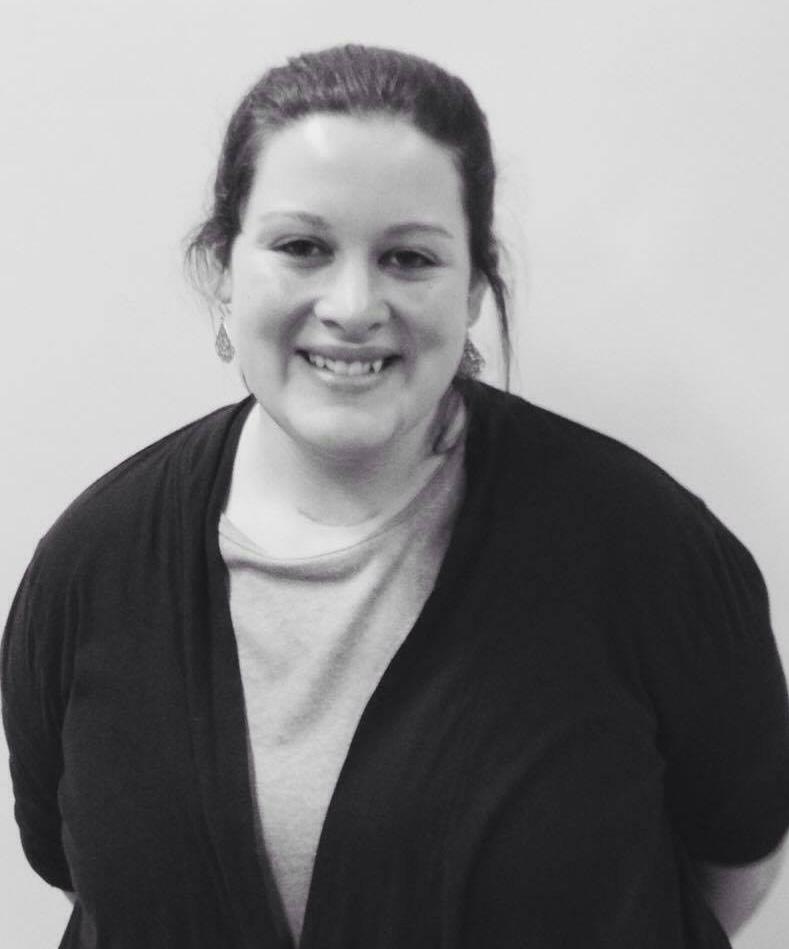
Margaret Trier replaces Andrea Harkness in the English department. She previously taught at John Stark High School before she joined us at ORHS. Like most of the other new teachers, Trier found this opening online and was interested; “I had heard such great things about Oyster River before.”
Trier is fitting into the OR community quite well. “She gets along very well with the kids and seems really responsible and elegant,” says Jaelynn Currie (‘20). Jane Schwadron agrees and adds, “She’s clearly very enthusiastic about teaching and seems so genuinely interested in what students have to say.”
Trier studied in England and got her Bachelor’s Degree at the University of Buckingham. Aside from traveling and focusing on professional development, Trier likes to learn new crafts, ski, and run. Back when she taught at John Stark, she coached the track team. Trier owns a cat, Daisy, that is named after the character in Great Gatsby.
- Megan WuHundreds of phone flashlights twinkled like stars in the stadium surrounding me. Occasionally a phone would extinguish, marking the end of a grainy snapchat video. Adele, the whole reason all 17,565 seats in TD Gardens were filled, stood alone on stage hitting every tear jerking note of “Someone Like You”. Sitting four stories on a balcony above her, the melancholy in her voice had me near to tears about all my failed imaginary relationships. It seemed to me that she was singing to me and only me. To reiterate, she was absolutely slaying it.
Three days early, after sum miting the last steps of the tower staircase, I walked into Consumerism, shockingly winded for a member of the ORHS Cross Country team. I found my seat in the back of the room next to Felicia Ayer (class of ‘17). My teacher, Karen VanDyke had already started class, and was handing out a worksheet about colonial taxes. Reaching our table in the back, KVD sparked up conversation. The usual ‘how was your weekend’ and such, after all it was a Monday. She then asked a peculiar question,“Dillon, what are you doing after school Wednesday?” I mean I had Cross Country, followed by a five o’clock class at UNH, but intrigued by the question I answered with a generic, “Nothing really, why?”
The previous evening my mom had been much more insistent about me completing my homework and or ganized for the week, you know classic mom nagging. She said something to the likes of, “You’re a whole busier this week than you think you are,” I pushed this off as cryptic motherly advice.



It clicked when KVD asked me if I wanted to go to Adele with her. That's what my mom had meant. KVD had after all called my mom over the weekend to make sure it was okay (“I thought you were in trouble,” my mom later said). My first thoughts were ‘Can you even do that? Is that legal?’ Apparently it is. Of course I said yes, who would ever pass up on Adele.
The next two days were a blur. Occasionally I’d see KVD in the hallway or class and we would exchange dramatic “Hellos,”
followed by a reminder of when we were meeting in front of the school on Wednesday.
I showed up ten minutes early to the agreed time, wasn't about to miss a millisecond of the show. As I arrived at the front of the school it was clear that KVD and I were in sync as she was standing by her car all ready to go.
As we passed the school, we were listening to “Hello” for my third time that day. The trip to Boston was a fury of stops. We picked up KVD’s sister, and her sister’s friend, and stopped at KVD house to feed her rambunctious dogs.
Very few know that behind my hardened facade, I am a diehard Adele fan. I sing-along to Hello in my car probably too often for 18-year-old boy. When 25 first dropped, I’d play it on repeat in KVD’s USII. So the opportunity to see her live, in person, was enough to send the butterflies in my stomach aflight. And to see it with KVD, one of the only people I believe is a bigger fan than me, was icing on the cake.

Traffic added another hour to our commute, giving us adequate time to smash through all of Adele's albums. We parked, and began going about finding dinner. Being in the North End of Boston, our options were Italian, Italian, Italian, and a sushi bar. (If you ever feel out place, just image how a sushi bar in the North End feels.)
We chose a restaurant that did not have a line out of a door, and were soon seated. Here we took our first selfie of the evening, per KVD’s request. A waiter brought a basket of bread over, which I promptly stuffed my face with. Looking at the menu, the indecision was real. Too many mouthwatering options. Panic washed over me as the waiter took my tablemate’s orders, and I chose at random and butchered the name.
Out the window a stream of people was already starting making their way to TD, and after finishing our bomb dinner, we joined them. Already, two hours before Adele was to take the stage, the streets were clotted with people. Soon the behemoth that is TD Gardens engulfed my view.
The foyer were a torrent of people pushing to get through secu rity. I was having flashbacks to those Black Friday mob videos and I was half expecting two middle age women to start a fistfight over an Adele T-shirt.
An astonishing thing about TD Garden is that once you get through security, a bottle of Dasani water is $4.50. That's the price of three gourmet Lunchman Tim Omeletts.
Escalators took us further up into the cement giant. We pushed through mobs standing around to buy t-shirts with blown up pic tures of Adele on them. (Which we of course purchased so we could shove it in everyone's face that we went to Adele.)

Adele opened with “Hello”, which made logical sense. She rose up onto stage on a square platform, to a stadium of cameras. That was an astounding experience. I was used to people whipping out their phones and Snapchatting or filming, but on this scale the whole stadium was illuminated by phone screens.
I first met KVD on the 4th day of my freshman year. After fixing my mess of a schedule, I was placed in Ms. VanDyke’s G period World Cultures. She immediately greeted me with open arms. Over the course of that year I’d bolt from my F period and arrive early to her class, which given my knack for tardiness is an astonishing feat. That class was unlike any other I’ve taken. We did Tai Chi, had dessert parties, and did puzzles, it was dope. Now in my senior year I’ve taken every class she teaches. A total of six semesters of VanDyke. A certain amount of solidarity is developed over that time, enough that going to an Adele concert was almost like a field trip of sorts.
Even more astounding was the power of Adele's voice, the emo tion instilled in it stripped away my inhibitions and stirred emotions deep within. Consequently the majority of the details from the concert are a haze. I remember moments of deep sadness, so much so I was on the verge of tears, and moments of absolute euphoria, empowered by lyricism about dirtbag boyfriends. It seemed that one moment Adele was rising up on a platform from the depths of TD Gardens and the next she was hitting the final notes of “Rolling in the Deep” as millions of slips of paper rained down on the crowd concluding her set. On each paper, a handwritten lyric from one of her many songs.

The next day at school everyone I passed had the same questions. How was it? Amesome. Was it weird going with a teacher? Not at all.
marks the time when students all across America are waking up early five days a week, and heading back to school. Pia Scharfenberg starts the day by making her bed, vac uuming her floor and locking up her closet; “If we fail room inspec tion, we’re ‘grounded’ and required to pick up sticks on the week end!” says Scharfenberg. Pia is a junior at Foxcroft School, an all girls boarding school in Middleburg, Virginia. Just over 600 miles away, Mimi Norton is pulling on her Adidas stan smiths and don ning a Herschel backpack. The rest of her uniform, a polo shirt and plaid skirt, is chosen by The Lovett School in Atlanta, Georgia. Ask any high schooler across America and they’ll tell you all about what’s trending, what makes their school unique, for good or for bad, and some of the craziest things that have happened during school.
Lydia Welp attends Sandpoint High School, a public school lo cated in Sandpoint, Idaho. She is a senior this year, and is looking forward to writing for her school newspaper, the Cedar Post.
“My school, Sandpoint High School, is approximately 1,000 stu dents, in a town of 8,000. Each student has eight classes, so four each day and they flip flop. Lunch is 29 minutes so everyone hur ries to get back in time after going out,” says Welp.

“Most days, Welp and her friends drive to Joel’s, a popular Mexi can restaurant, for some fish tacos and burritos in between classes. “SHS is a big school for it’s location. We are also a 5 star high school and have some of the best athletes in the state. Our school has great art and computer programs. We also have an awesome team of women who help all graduates to make plans after high school, no matter what they are. We also try to include the com munity in school events. For example, during homecoming week, we have a carnival after school for the whole town. In December we raise about $10,000 every year from students and staff which we donate to toys to tots,” says Welp.
Although most days at SHS run smoothly, the past year has been difficult.
“A serious problem at our school is suicide. In the past year and a half, there have been four students who’ve taken their own lives. It is most definitely a chain reaction and we struggle to find a way to stop that reaction,” says Welp.
“If we fail room inspection, we’re ‘grounded’ and required to pick up sticks on the weekend!”
Mimi Norton is a junior at The Lovett School, a private day school in Atlanta, Georgia. Approximately 600 students attend, and school starts at eight and ends at three.
“Fun fact about my school: it denied MLK Jr’s son admission in the 1960’s because the school wasn’t ready to integrate, and because of that the Episcopalian Church stripped our accreditation so now we are a non-denominational school,” says Norton.
In Mimi’s opinion,her school’s biggest problem is sexism in sports. The school spends more money on boys sports than girls, “Especially football!” says Norton.
Lovett students will stand up and protest when they feel something is wrong at their school.
“The craziest school day was when the senior who had the lead in the school play, whose name was Daniel, was late to school because he wasn’t feeling well, but Georgia has a statewide law saying no student who arrives after 9:30 can participate in any after school ac tivities, so he couldn’t perform in his first night of the play. Because of this, our whole school had a protest in the courtyard and we sat outside through lunch yelling; “All we are sayinnnng, is give Daniel a chance” to the tune of John Lennon’s “Give Peace a Chance” and we were 20 minutes late to the next class before the administrators made us leave. He never even got to perform in the play that day!” says Norton.
Liz Landefeld is a senior at Roosevelt High School, a public school of about 1,700 students in Seattle, Washington. Liz is from Seattle and her favorite class is AP photography. Outside of school Liz enjoys sailing, thrift shopping, and scuba diving. One of her most memorable days is when she brought her dog, Posy, to school.
“I carried my dog past my principal one day when I was in school while I was supposed to be in class and he said, “Oh is that a long haired dachshund? Very cool!” says Landefeld. Rachel Glaser also attends Roosevelt, she is a junior this year. The atmosphere is not always as casual as Landefeld describes. Glaser cites underage drinking as Roosevelt’s biggest problem.
“Roosevelt’s unofficial name is ‘Boozevelt’...most of the drinking occurs at ‘spodies’ (a casual party held outside) and house parties. Spodies are popular, but they generally occur in remote park areas and tend to be shut down by the police,” says Glaser.

Caroline Sharp is a senior at Garfield High School, also in Se attle. The rapper Macklemore is a famous graduate of Garfield. Sharp’s favourite class is photography. Outside of school Sharp enjoys traveling, hiking, and rock climbing. Recently there have been protests at Garfield against various problems, most notably the football team’s decision to kneel during the national anthem in solidarity with the Black Lives Matter movement. Sharp has described her own involvement in protesting.
“Our principal made such a sexist comment in an all school assembly that I felt the need to stand up and yell at him,” says Sharp. Sharp described how at the beginning of the school year there was an all school assembly in which the principal warned male students to: “Take care of female students.” Sharp was among a group of students who voiced concerns at the undertone of the principal’s comments.
Chloe Loeffelholz, Malia Bertelsen, and Toni Seppi are all seniors attending Bozeman High School, a public school in Bozeman, Mon tana. More than 2,000 students attend BHS. Chloe’s favourite class is AP English. “The biggest issue, I would say, is population. The hallways are constantly crowded along with with class sizes up to 50 students.” says Bertelsen. Despite this huge number of people; “Our school is not very diverse.” says Seppi. Toni disagrees about popula tion as the school’s biggest issue. “Underage drinking and drug use are probably our biggest problems,” says Seppi. Notable alumnae of BHS include Allinger Lewis, Brock Coyle, and Michael McFaul. Se nior pranks are an infamous tradition at Bozeman High School, with each senior class pulling a memorable stunt. “Last year as a senior prank all the students brought their dogs to class, and three students ended up in the ER due to allergies,” says Seppi. “Two or three years ago the seniors planted a tree in the athletic fields!” adds Bertelsen. As for fashion, Patagonia is a prevalent brand, and making your own jewelry is a fashion trend. Many people dress in a “Granola” style. Chloe and Malia describe a so called ‘Granola’ “A Granola wears Birkenstocks, they like to go on hikes and drink tea out of ceramic mugs they make. They refuse to wear anything other than Patagonia. They’re free spirits and usually informed about global events.”
matter what school you go to and where you live, high school can be a crazy, stressful, and amazing experience. You may face problems that you won’t have later in life, but these experienc es will prepare you for whatever you go on to achieve. Although schools vary vastly across the U.S. the challenges students face are similar; homework, school related stress, social drama and the constant battle to balance school with the rest of your life. It may be a welcome relief to remember that you are not the only one facing these challenges.
No
“I carried my dog past my principal one day when I was in school while I was supposed to be in class and he said, “Oh, is that a longhaired dachshund? Very cool!”
Ionce had a dream that I was approaching a traffic light in my car. The light turned red and I tried to engage my brakes, but they didn’t work. I plowed through the light and ended up crashing in the woods.
We all dream while we sleep. Some have more dreams than others, some might barely dream at all. It’s a matter of remembering what we dream about.
Researchers have yet to understand why we dream or what they mean, but we do know that they are important and have a pur pose. The leading theory is that dreams are how we communicate with our brain on a deeper level; perhaps an uncensored view of our true feelings and issues in our reality. Dreams might seem absurd in retrospect, but they typically depict familiar faces, places, and activities you experience when you’re awake. People regularly notice important aspects of their lives have been carried over into the dream world, but they are sometimes revealed with rather unusual imagery that requires deeper analysis. Things like worries and what you care about most in life might manifest itself as an object or person while you sleep. For example, if you are in an eleva tor in your dream, it can represent the ups and downs of your life. So if the elevators breaks down and plummets to the bottom, you should be a bit concerned with what your brain is trying to tell you.

Here are some dreams from Oyster River students, with a component of the dream shocked them the most, and research what it means (using DreamMoods.com), and see if it relates to their waking life.
Caroline Wilson (‘17) often sees bears in her dreams: Therewasagiantgrizzlybearstandinginthekitchen,eatingallthefoodweowned.Then,mymom hadwokenupandthebeargrabbedaknifeandstartedtochaseher.Luckily,mydadcametotherescueand stabbedthegrizzlybearwithafork.
Bear: To see a bear in your dream represents independence, strength, death and renewal, and/or resurrection. Bears are symbolic of the cycle of life. You may also be undergoing a period of introspection and thinking.
“I’m already pretty independent, but in a little less than a year, I have to be a real adult with real responsibili ties,” says Wilson, as she prepares for college.
Gigi Reece (‘18) recollects a recurring dream she had growing up: I remember being on a school bus with blackened windows, and looking around, I noticed all of the other kids were faceless. The bus driver would say where our stop was through the speakers, but I couldn’t hear what the destination was because his voice was oddly muffled. But all of the other kids heard him and began to cheer.
Faceless: To see a faceless figure or person in your dream indicates that you are still searching for your own identity and finding out who you are.
Bus: To dream that you are riding a bus implies that you are going along with the crowd.
“I had this dream all throughout middle school, so I guess my subconscious mind could have been telling me I needed to find myself,” says Reece.
Recurring dreams are typically triggered by a transitional phase in life, according to Dream Moods.
Kristin Short (‘17) explains a dream she had in elementary school: My four siblings and I were on the playground at the elementary school, and our house was in front of the school. There was a snake that was wrapped around an axe and began to hop while chasing us. We tried to run, but it felt like we were running through molasses. We eventually got to our house to watch TV, but the snake saw our shoes through the screen door and knew that we were home; it was almost like it was a game. We had to run to a bridge where our parents were to be safe from the snake.
Snake: To see a snake may refer to a person around you who is callous, ruthless, and can’t be trusted. As a positive symbol, snakes represent healing, transformation, knowledge and wisdom.
“Elementary school was a weird time for me,” says Short, “I was in 3rd grade when I had these dreams.”
Ben Harriton (‘18) explains his dream: I was at my job at Dunkin’ Donuts, trying to take peoples orders. The customers were all murmuring and I could not understand their orders for the life of me. I had to keep asking them over and over again what they were saying. Everyone was so mad at me because I couldn’t hear them.
Job: To dream about your current job suggests that the dream may mean you are overworked or preoccupied with work. You need to make time for leisure and relaxation.

Harriton explains how he relates to this definition: “I think it was because rather than spending my summer relax ing, I spent almost everyday working, and I regret that.”
“Another theory is that our lack of recall is partly due to the hormone associated with memory nor epinephrine, (nor-epeh-nef-er-in) being turned off while we sleep, so our brain doesn’t actually encode our night visions into memories,” according to sleep.org’s article, “How Often Do We Dream?”.
Purple fell from stage lights and onto Stuart (Stu) Dias’ bearded face. He belted swinging melodies, while Zach Lange wailed on a glittering trumpet next to him. Eric Klaxton flut tered on his clarinet, Nick Mainella blew on his saxophone, Brett Gallo banged on his drums, Mike Effenberger stroked the keys of his piano, and Nicholas Phaneuf strummed his upright bass. Each of them played their own, largely improvised parts. They collided in a great animal of sound, rising when the others fell, breathing with life in the way that New Orleans Jazz does.
On a floor scratched by thousands of heels, people danced until the moon was high in the sky, despite the pressing heat of a late summer night. An old man rattled shakers while dancing with his wife, UNH students leapt from partner to partner, and a mother danced with her young daughter.
The Soggy Po’ Boys are a band from Dover, New Hampshire. The first time I saw them was at the 2015 Harmonium music festival in Rochester, NH. I fell in love with their New Orleans style music immediately. On September 10th, over a year later, I got into my car after a long day of work to interview the Po’ Boys at the Dance Hall in Kittery, Maine. I arrived an hour ahead of their performance and met with Lily Mangan, Lauren Quest, and Nick Dundorf. We prepared our notes and questions nervously as the sound of the band warming up echoed through the old wooden halls.
Just as we calmed our nerves, Dias came striding through the great door to our right, dressed in a casual white tee. I introduced myself and before we knew it, we were swept into the white walled basement. We sat down at a plastic table and the other members of the band filed in slowly from various crooks and crannies of the basement.
The interview had to be done quickly; there was a show to put on.
The members of the Po’ Boys all knew each other before they be came a band. Most of them had played with the others in some con figuration, and each had an extensive history with music.
The first time they ever played together was a pick up gig at what was once the Barley Pub in Dover. There was no plan for the band to exist as it does now. “It’s funny; the first year that we were a band, we played maybe three or four gigs, the second year we played at least 50, then the year after that was like 150,” said Dias, the band’s lead singer.
Dias laughed as he said, “Mike, the day before we had the gig, said ‘Do you guys have any ideas for a name of this group?’ Of a large list of names, [The Soggy Po’ Boys] seemed the least terrible. It does make sense, since a Po’ Boy is a well known New Orleans sand wich. The soggy part isn’t good, but the idea is if you bring one from New Orleans, by the time it gets here it will pretty wet.”
Over the past few years, the band has grown substantially in popularity, performing at the Dance Hall about six times a year, the Cocheco Arts Festival, and at Sonny’s Tavern every Tuesday eve
The band plays music primarily from the New Orleans Jazz genre. Each of them writes original songs, but the majority of the songs they play are from well known jazz artists like Louis Arm strong. Their music consists of standards from the time when jazz was in its infancy. They list musical influences includ ing Fatts Waller, Sidney Bechet, Dr. Michael White, and Professor Longhair.
“For me it took a while to sift through what I liked, what I didn’t like, learn a bunch of things, forget a bunch things, learn a bunch more things. Then there was an opportunity to sit around and start calling tunes, songs to play with a bunch of us in the same room. We found that a lot of our common ground was the oldest stuff that we all knew. We decided to dig into that since we had so much experience playing it with each other, and our love of New Orleans Jazz sorta grew out of this kind of looking backwards thing,” said Klaxton, the band’s clarinet and saxophone player.

IIIWe arrived early to the dance hall after we left the interview and found our seats quickly. No sooner had I placed my notebook under my chair than a woman in a black dress approached us. Unfamiliar to adolescents in the Dance Hall, she asked, “Are you dancers?” I replied no, as I never danced in a very formal style outside of the gym dance unit (which is a stretch of the word formal.) She smiled and called a man from across the room to her side. “You are now. We’ll teach you. I’m Dusty,” she said.
So, we learned anew the steps to the swing dance, including some new moves that we had never heard of before.

I didn’t know if I was going to use it, but the lesson was fun, and my limbs buzzed with anticipation as we waited for the Soggy Po’ Boys to reach the stage. When they did, they immediately played and the room filled with the breathing of the animal of sound. Peo ple were quick to join in and flocked to the dance floor in steadily increasing numbers.
The music of the Sog gy Po’ Boys is lively, messy, and fun to lis ten to. The crowd that gathered at the Dance Hall was certainly a tes timony to that. The large open space that was the Dance Hall was lined with chairs and tables full of people. There was such a throng of peo ple that many had to opt for stand ing behind the tables and chairs.
The thing that I saw most among the danc ers was that they were smiling. Old and young beamed from cheek to cheek.
Anna Tremblay is part of the UNH Hepcats, the college’s swing dancing club. She travelled to the dance and said, “It’s fun to dance to. It’s even fun to listen to. It makes you want to get up and dance and have a good time. We love the Po’ Boys! It’s really hard to find swing dancing in New Hampshire. It’s great to have them around in Kittery and Portland.”
I could not resist the tempting lure that the Soggy Po’ Boys had created. I danced and I danced. The sliding rhythms and swinging melodies moved the bodies of everyone around me, and moved me too. It was the best time I’ve ever had dancing.
IV“Almost all the time, the first time we play something, we see the song for the first time at a gig,” said Dias. “This type of music is meant to be heard live. It’s improvised, you know.”
Dias said that the Po’ Boys rehearse three or four times a year, and that’s it. The band had a laugh when I said that was pretty impressive, saything they thought it was more irresponsible. It really is meant to be heard and seen in person; I’ve listened to them play songs from their first album, It’s Time to go Home, and they play it completely differently every time they play it live.
It is clear that for the members of the Po’ Boys, music is a lifestyle. Many are in different bands, and perform on their own too.
“I think for me, one of my favorite parts about playing music and be ing a musician is the opportunities that it presents in a way that, had I done something else, I wouldn’t have. I’ve found myself in some really awesome or some really odd situation specifically because someone else wanted music. As well as a community of people that aren’t mu sicians, I don’t know if I would know all the faces I love so much had it not been for being a musician,” said Lange, the trumpet player. Lange, Effenberger, and Dias all perform together in another local band, Mother Superior and the Sliding Royales.
“When music is really working well, you can either take in from musicians that are playing or put out as a musician, a whole world view,” said Effenberger, the pianist.
VIn a promotional video the band filmed, they said that their music seemed to inspire fun and dancing in nearly everyone young and old, except for adolescents. I asked why they thought that New Orleans Jazz was not as enjoyable for teenagers.
“When I was a kid, the idea of New Orleans or Dixieland Jazz seemed unrelatable not because of the music itself, but because all the opportunities I had to see it live it was being performed in a semi-substandard way by people who probably didn’t love the tra dition as much as the people who made the music in the first place. So, I think it came across to me as a dying thing, because the people playing it were dying, meaning just really old and uninspired in a way,” said Mainella, the saxophone player.
“It’s often performed like a caricature. If you think of a pick-up truck with five dudes wearing derby hats and suspenders, that’s most people’s first inroads to this music and it’s pretty far from the real thing, so it kinda turns their back I think,” said Effenberger.
This is why the Po’ Boys try to imbue their music with the energy, liveliness, and love that it was originally played with.
“We try to play it as honestly as possible,” said Dias. For more on the Soggy Po’ Boys, and Mouth of the River’s first ever interactive article, visit mor.news or scan the QR code below.
- George Philbrick“I have gone probably 1.5 million miles with students and I haven’t had a student reportable crash. Not too bad, huh?” said Kevin Towle.
Towle has been a driving instructor since 1984, right after he grad uated college. Towle’s dad started a driving school and he fell into his path while looking for some part-time work, and eventually it turned out to be his full-time job when his previous job at Pease Air Force Base was being phased out. Towle had worked for the State of NH teaching some DWI classes, and also for Prudential Insurance for a short time. Towle’s driving school offers classes at Oyster River High School, Dover High School, Coe-Brown Northwood Academy, Saint Thomas Aquinas High School, Nute High School, and Portsmouth Christian Academy. About 5,000 students have gone through his school over the years and several hundred from Oyster River.
“His driving school is different than others I hear about,” said Dylan O’Connell (‘17), one of Towle’s past students. “He relates with the stu dents more and is invested in helping them succeed.”

Towle’s favorite part about the job is watching students have that “lightbulb moment” when they get a certain parking technique or driving concept down that has been talked about in class. “It always warms my heart to hear that a student has passed their driving test. I love hearing what my students are up to after class because we get to talk about sports, music, theater and their part-time jobs so I know about them a little and I care about their success,” he says. “Sometimes they text me or stop me in the hall to talk.”
There are also challenges to the job and things that Towle does not love so much. Scheduling, for one, can be a major headache since so many high school students have sports and extracurricular activities to work around. Towle says his family time has suffered over the years with all the driving time. “Vacations and family weeknight dinners really have to be planned out because I’m always driving, six days a week but never on Sunday, which is my only family day.”
When asked about his scariest moment behind the wheel, Towle recollects a harrowing story about the Portsmouth traffic circle. “We ended in the middle of the circle in the grass area because I had to grab the wheel. I told a student to merge left and they thought that meant turn left. I have also spun the car around in a 360 in the middle of heavy traffic in a December light snow storm and the student thought that I had done it for training purposes,” said Towle.
Learning to drive can be a challenging time and in moments like that being relaxed is key. “I really liked how calm he always was when driving with students, and he always was able to make it seem a lot less stressful,” said another past student Gabby Spang (‘17).
Towle has had some memorable moments as well. “The funniest moment would have to be watching a person wrapped in gauze around their head go into a drug store and rob the drug store. We were per pendicular parking and thought it was odd that the passenger in that condition would be going into the store to get their medication and not the driver. The car drove away and parked out on the main road (also odd) and within two minutes this guy comes running out of the drug store across the parking lot and jumps into that same car. We put two and two together and figured out what was happening. The stu dent wanted to go chase the car but I said it was better for the police to do that. We stayed around and gave a description of the car to the police instead,” jokes Towle.
All in all, driving from the passenger side of a vehicle for so many years has given Mr. Towle an interesting point of view. “I get to see the change in people’s driving behavior over the years. It’s really get ting worse—with speeding, lack of stopping or yielding correctly, and now we have cell phones. It’s funny…I’ve been in a car that has trav eled over a million miles but have stayed within a 30-mile radius the whole time,” said Towle.
How do I sign up to take the SAT?
In order to sign up to take the SAT, many would think you go to Coun seling, but actually to register, you have to go through collegeboard.org. Sign in with your account or if you don’t have one yet, you can register for an account through the Counseling office. Once signed in, on the right side of the screen, you will see a box that says “Register”, after clicking on that you may chose the date and location of the given options and fill out the rest of the information. When the day comes to take your test, get lots of sleep the night before, eat a healthy breakfast and print out your online ticket, which you will find on your screen after you register. A printed ticket, approved calculator, a couple #2 pencils and another form of ID are required for the test. You can also bring a snack and water to have in designated areas during break times.
When should I take the SAT?

It’s usually a good idea to take the SAT more than once, but when you take the test isn’t super important as long as you have enough time to check your scores before it’s time to apply to schools. The SAT will be offered for all juniors once a year by Oyster River High School free of charge. If you wish to take the test again you can sign up to take it at another school using the process described in the previous question. There’s no maximum amount of times you can take the SAT, so I recommend taking a SAT study course to learn strategies to do your best and take the test a few times. This may help improve your scores as you become more famil iar with the test style.
Depending on where you want to apply, you may not need to take the ACT. Some schools don’t require that you take the ACT, but others only require the ACT and not the SAT. Some schools even like to see both. Once you narrow it down to some top choices or even once you have a top ten, look on their websites to see what test(s) they require. Make sure you do this well before it’s time to apply since SAT and ACT test dates are limited.
How can I manage my homework, sports, and schoolwork?
Time management can be tricky, especially while balancing good grades, a full schedule and an after school sport or extracurricular activity. Set ting a time to buckle down and really focus on one subject at a time can really help eliminate procrastination and improve organization. Some things I do is rate the homework I have on a given night from least time
consuming to most time consuming. It’s easy to put off that month long book project until the last day, but if you always start with the biggest homework assignment and work your way down, it will feel much easier and eliminate procrastination. If the workload is still too much you may want to talk with guidance or your teachers about making some changes in your schedule.
How do I avoid feeling overhwlemed by applying to colleges?
The college process can be long and tricky to find a right school and get everything done on time. College counselors are a very helpful option who will walk you through preparing to apply and many students here at Oyster River have gone to one. However, counselors can be expensive and not everyone wants to pay money for one, and that’s ok! You are absolutely capable of getting it done on your own. I recommend starting early, the summer before senior year if you can, and start contacting universities you’re interested in and visit some of the schools. When fall comes, try to finish up your Common Application, essay, senior sketch on naviance and contact the teachers you would like to write your letter of recommenda tion. If you do a little bit each day or each week, you will have no problem getting everything done on time. If you have any questions along the way, I guarantee the Counseling department will have the answer for you! And along this process, have fun! Picking the school you are going to be at for the next 2 to 4 years is something really exciting; just enjoy the process.
Although what people might say, college is not the only path after high school. Many people have taken gap years or started right out in the work world. If college doesn’t sound like the plan you want, that’s okay! Start looking for a place to work or where you want to go when graduation comes around.
What do I do if I receive a negative message on social media?
It’s easy for people to hide behind a screen and send out mean comments that they would never say to your face, and it’s easy to get caught up in the moment and say something back or take it personally. If this happens to you, I recommend logging off and taking a social media break for a few hours and trying not to think about any negative comments. If you’re still upset or concerned about the message, Oyster River is full of trusted adults who are here to help, whether it be your counselor, favorite teacher, coach or advisor, any of the staff members are happy to help.
To anyone who has ever asked themselves, “what did I just see?” this article is for you.
Ithaca College, early August, 11:47 pm. The evening was warm, clear and quiet when I looked up to see a small light zipping across the sky. Save for a brief, almost subconscious thought of “that was a little strange,” the object left my mind soon after it left my peripherals. I sat on a picnic table with my friend Jae, a fellow acting student. “We’ve been together for 3 years, I don’t know why he’s acting like this now,” she said, continuing our conversation. “I mean I feel like-” She stopped mid-sentence and began to squint upward, “What the hell is that.” “What?”
“Right there.” she pointed at the sky.
The same small bright object from before was now traveling in slow, lazy circles far above us. We couldn’t tear our eyes away from it while we both tried in vain to rationalize what we were seeing. The object stopped abruptly, hovering in the sky before vanishing completely. One moment it was there, and in a fraction of a second it had faded into the void of the night sky, right before our eyes. Neither of us had dared to blink.
A little over a month later, I still don’t know what that object was and I’ll probably never find out. What I do know is that I saw it, my friend saw it, and any other stargazers out that night probably saw it as well. Now, before I’m accused of watching one too many episodes of the X-Files, I’d like to unpack this a bit.
When you see something you can’t explain, be it a shadow in a hallway or strange lights in the sky, what’s the first thing you think? Do you look for someone to tell, or do you push it to the back of your head? Do you try to convince yourself it’s not real, or do you burn some sage to cleanse your house and call a UFO hotline? Do you look to science? Do you look to religion? Maybe you’ve seen too much to tell without the risk of being called a liar, or maybe you’ve never seen anything in your life that you can’t explain somehow.
When it comes to the paranormal, people can usually place themselves somewhere on the Sliding Scale of Skepticism, colloquially called the SSS by me because I just made it up.

On the far left end of this scale we have the Logical Lennys. You proba bly know a few of these guys, they don’t believe in anything that can’t be explained by modern science and quantitative fact. You can usually spot one of these happy little iconoclasts if they’ve interrupted your sentence three or more times to correct you on some benign fact that you only half care about. On the far right end of the scale we have the Believe-It Ben nys, you probably know a few of these guys as well, think of those peo ple who constantly use a Ouija board, wear tinfoil hats, and unironically watch Monster Hunters and Ghost Adventures on a daily basis, maybe they’ll go on a Chupacabra hunt on the weekends, who knows.
Both Logical Lennys and Believe-It Bennys are equally annoying, es pecially if you come across them in their element, a Facebook comment section battleground. This being said, fortunately most people fall into the middle range of this scale, maybe leaning a little bit to the left or to the right depending on the person. You could be a Doubtful Denny, a Jump-To-Conclusions Jenny, or even Prove-It Penny, the list is endless.

No matter where you fall on the Sliding Scale of Skepticism, you or someone you know has probably had some experience with the paranor mal. It’s certainly up to you whether you believe what they tell you, but you do know them. It could be your friend who swears she saw the Moth
man when she visited West Virginia, or it could be your uncle that tells the same ghost story every Thanksgiving. But why do some people tend to have more experiences with the paranormal beyond just one weirdly endearing Thanksgiving ghost story, when others have no experiences at all?
I asked myself, and others, a version of this question soon after my strange event at Ithaca College, which incidentally had not been my first experience with such occurrences.
“Why do I see so many UFOs?” I asked my friends, parents, boyfriend and anyone else who was willing to give me an explanation. The answer was nearly the same from everyone: “It’s because you’re looking for them.”
They were all completely right. I had never had such a deeply correct answer given to me in a single sentence. It’s 100% true, I am frequently vigilant for anything of the sort. This answer is both disturbing and exhilarating; on one hand you have the argument of humans seeing and
believing what they want to see and believe, on the other hand, in paying a little extra attention to try to see beyond what’s usual; humans heighten their chances of experiencing the paranormal solely due to their focus on it.

It’s always better to have a second pair of eyes if and when you see some thing you can’t explain, especially if you’re actively looking for it. I was lucky to have had my friend at Ithaca right by me when we saw the UFO because she can always confirm that she saw what I saw, making me feel a bit less crazy and a bit more like Special Agent Fox Mulder. It’s a comfort and in many cases necessary to have someone there to confirm that what you have both just experienced really happened.
“Until I was like 14 years old, I never really felt alone and I always felt the presence of a little girl.” said Lauren Abbott (‘17). Abbott’s younger years were chock full of the spooky and unexplainable, most of which she experienced alone.
“I remember I pretended that I had an imaginary friend and I was push ing the swing because I wanted to be like other kids who had imaginary friends and I just... there was this weird feeling like something was in that swing and I wasn’t exactly welcome. When my parents let my sister and I stay home alone for the first time, I went into their room and I saw a girl standing in the corner of their bedroom, she was so scary I don’t even want to think about it.”
On the list of things I don’t want to experience alone, seeing a little ghost girl in the corner of my parents bedroom is near the top. Abbott not only had to go through this experience by herself, she now floats in the limbo of believability. She is at a huge disadvantage because no one was there to witness this with her. Abbott is in the tough spot of most paranormal witnesses, you either take her word for it and believe her, or thinks she’s lying or was tricked by the light or a very ominously stacked pile of throw pillows resembling a ghostly child. This being said, she isn’t the only Oys ter River student that has experienced the paranormal.
“It was a really misty night, but I could still have my high beams on. All of a sudden I saw this figure of a woman made of mist and my car just went right through her.” said Tucker Jennison (‘17). “I was camping in New Durham and I woke up at like 4:00 am for some reason. I looked up through my tent and I could see this giant ball of light floating through the sky and descending into a lake. The weirdest thing about it was that it was completely silent.” Ben Sagnella (‘19) recalled. “When I was seven or eight years old, it was really late at night and I couldn’t sleep. I went into my parents room and I saw a little girl wearing a dress. At first I thought it was my sister, but when I called out to her she disappeared,” Kelly Halloran (‘20) recounted.
“One time we tried to summon Elvis,” Maddie Glass (‘18) said laughing. Not only students have had experiences either, many Oyster River teach ers have had their fair share of the strange and unexplainable.
“I lived in the Gables my senior year at the University of New Hampshire. The first day me and my roommates moved in, there was this very prof fessional portrait of a woman on the counter and none of us knew who she was. While we were living there, trash would be knocked over, doors would slam on their own, sometimes we’d wake up in the morning to see all the cabinets and drawers open. We had a name for her but I don’t remember it, none of us were really scared though, she became like our seventh room mate,” said English teacher Corey Blais.
“I grew up in a house I believe was haunted, I think perhaps the house I’m currently living in may be haunted too,” remarked Social Studies teacher Derek Cangello.
“Hm, I had some ghosts in my grandma’s house.” said Dean of Students Mike McCann, after giving it a moment of thought.
Out of all the teachers in the school, it’s safe to say that Social Studies teacher, Karen VanDyke, has had the most continuously occurring para normal experiences throughout her life. “If you don’t experience it, you don’t believe it,” she told me when we began to talk. What she said next was astounding.
our website or scan
To read what VanDyke said, go to
the QR code below.
“I went into their room and I saw a girl standing in the corner of their bedroom, she was so scary I don’t even want to think about it.”
- Lauren Abbott (‘17)
-Lily Mangan
Now that the school year is in full swing, students at Oyster River are beginning to feel the all too familiar pressure that comes with academic work. Pair this with the time consump tion of sports, clubs, and social activities, and it can cause downright panic. Aside from being potentially harmful to your mental health (anxiety and insomnia, to name a few effects) stress can actually affect your physical health as well.

While many students at ORHS are aware of the mental effects and feelings of stress, many are uneducated about the ways stress nega tively affects your body - and the list of these negative health effects is significant. High blood pressure, tight muscles, decreased immunity, and overworking of the heart are just a few of the symptoms students experience when exposed to excessive stress. Mind you, some of these students are as young as 14, an age that is way too young to experience these ailments. However, there are ways to protect yourself from these nasty conditions. So, put your phone aside, grab some comfort food, and read on to become a master of your own anxieties.
Brian Zottoli, a psychology teacher at Oyster River High, explains the body’s physical reaction to stress and how it can be harmful. “When people were just cavemen living in the jungle, stress was an essential part of survival. If a caveman suddenly came across a tiger, his body would flood itself with the stress hormone, Cortisol, as well as Adren aline, in order to trigger the body’s “fight or flight” response. [He] would have a faster heart rate, higher blood pressure, dilated pupils, and blood would move to his muscles so that they would perform at their best if he needed it. If this caveman was able to run away from the tiger, that physical activity would burn off the adrenaline and Cortisol in the bloodstream, and he would go back to life as normal. Stress from school can trigger the release of these chemicals in the brain as well, but when they aren’t burned off through physical activity, it can cause the person to stay in a constant fight or flight state. This means that those chemicals are constantly pumping through their bloodstream, which can definitely create adverse physical health effects.”
So,how can one prevent these effects? In order to get to the root of the problem, students around the school were asked for some of the major triggers of stress in their lives.
“I would definitely say that homework is a big stress source for me,” says Matt Bishop (‘17). Bishop says that time management can be tricky in high school, especially when doing extracurricular activities. Some nights, assignments that were given out days ago pile up for tomorrow’s due date, which can give him the well-known last minute deadline rush of stress. Homework goes hand in hand with time management, so in order to be better at the former, you must develop control of your schedule. Spreading out your work so that you can complete assign ments before the deadline without stress can definitely improve your quality of life, and make your life a little less hectic. Instead of going on your phone at home for hours on end and following the social net work movements of all of your friends, why not crank out 20 minutes of work on that paper you need to write? That’s 20 minutes less work that you need to do in the future, 20 minutes of time available to do fun things with friends, or 20 minutes of sleep that you probably need desperately. Time management takes some self-discipline, but if you continue to keep yourself in check it can help keep you comfortable and in-control when it comes to homework. Another aspect of school life that can cause a student to worry is a big exam or test coming up in the future. Sierra Carpenter (‘17) says that she gets “really anxious before tests, especially for Precalc.” Carpenter is not alone in this struggle; a study by the Huffington Post revealed that 20% of students surveyed experienced high test anxiety, with another 18% experiencing moderately high anxiety. These students scored an average 12 points lower on a sample test than those students with low test anxiety, a major deficit when it comes to the grade they received. Thinking of this may stress you out more, but don’t worry; test anxiety doesn’t have to rule your academic life, and there are ways to defeat it. The first thing that you can do to rid yourself of anxiety before a test
“The stress? It’s starting to get real,” says Bengt Jobe (‘17).
is take a step back and look at the big picture - there’s a likely chance that this test does not mean life or death for you. In fact, a single test or even a couple tests are pretty miniscule in the grand scheme of things, so why spend your time and energy concerning yourself with it? Keeping a positive mental attitude is key for this, so remind yourself about how talented and accomplished you are, and how this test will be a breeze. You can also use a technique right before or during a test to calm your nerves, called “the 4 and 4 for 4.” For this exercise, you breath in for four seconds, then breath out for four seconds, repeating for four breaths. This reduced rate of breathing can slow your heart rate, focus brain function on the task at hand, and reduce the amount of adrenaline being pumped into your bloodstream. These can all help to reduce the mental fog that occurs during test taking, and keep you from drawing a blank when a tough question comes up. There are other factors besides homework and tests that can cause stress for students as well, some of which are unknown to the student themselves. Diet and exercise can significantly affect the amount of stress that one experiences in their life; stimulants like caffeine can increase the body’s reaction to stress immensely by increasing your heart rate and amount of adrenaline released when you experience stress. This will only serve to heighten the mental and physical health problems caused by stress, so substituting water for caffeinated drinks is another way for you to avoid excess stress, as hard as it may be. Water may even help you to feel more alert and awake, as the tiredness you feel in the morning and throughout the day could be caused by dehydra tion. Coffee causes your body to burn through water even faster, which can be problematic if you’re not replacing the water that is lost. As for your diet, try to keep it balanced - Kevin Pietro, clinical assistant professor at the University of New Hampshire recommends keeping a
quarter of your plate filled with vegetables, another quarter filled with grains, and then slightly less than a quarter for both fruits and protein, with a drink of dairy on the side. Pietro has talked to the Oyster River boys and girls cross country teams about this nutrition plan, and highly recommends it to athletes and nonathletes alike. You can read more about this on ChooseMyPlate.gov, the USDA’s website that outlines healthy eating habits.
Some sort of meditation or mental rest can help calm your mind and ease the stress in your life. There are plenty of smartphone apps, web sites, and YouTube videos that offer meditation techniques for free that students can try, one being an app called Breath - it’s free to use but you can pay to have the premium version. Breath is centered around guided meditation to help with many ailments, from sleeplessness, to self-confi dence, to anxiety, walking you through a calming and relaxing mindset in order to help your stress.
Another one of the biggest helpers for reducing the stress hormones in your bloodstream is exercise; running, swimming, or any other form of physical activity can use up the adrenaline in your system, in addition to releasing natural endorphins (feel good chemicals) into your body. Ex ercise is also enormously beneficial to your body physically, so do your body and mind a favor by doing at least one hour of physical activity per day.
A little bit of stress can be beneficial for finishing a paper or running away from a tiger, but when it builds up it can cause both your body and mind harm. Having a combination of stress reducing techniques for both before and after the release of stress hormones in your body can positively affect your physical health, as well as help you lead a calmer and stress-free life. Follow some of these tips and discover some on your own, and you’ll be a stress guru in no time.

She sits in class watching the clock hands tick by. The class buzzes with conversation, the thing she dreads most. The teacher bringstheconversationbackandasksforthe quieter students to voice their opinions. No onesaysanything.Thentheteachercallson her. She goes into panic mode trying to spit her thoughts out of her mouth but she only getsoutasentencebeforesheturnsasredas a tomato. Other students watch and she feels their judgement; the embarrassment mak ingherfaceburnandpalmssweat.Thenthe teachermovesontothenextpersonandshe sighsinrelief.
Participation in classes is something that many people struggle with, yet some thrive on participating in class. Many factors go into feeling comfortable participating. Some of these factors include the size of the class, who is in the class, the teacher, and the sub ject. For many students, myself included, voicing your opinion is not always easy, yet you know that if you don’t speak up you will be faced with the consequence of the dreaded participation grade. Many students that have a hard time participating are still engaged in the class. Grading people on participation is not a way to figure out if they are paying
attention and engaged in class and it is not something that I think should be graded at all.
Alex Blackwood (‘17) feels that participa tion should not be graded solely on speaking in class. “It can cause people to feel intim idated by others and they are less likely to share all of their ideas.” She believes that there are many other ways to grade partic ipation since there are many different ways to show interest and engagement in a class.
Some teachers do realize that not everyone is ready to raise their hand and participate. Not everyone is the same; we all have differ ent ways of being engaged in the classroom.
Gabrielle Anderson, social studies teach er, no longer has a participation grade in her class. Instead she grades with a habits of work rubric. This rubric includes being to class on time, doing all of your work, and showing that you can participate even if it is only once. Anderson works closely with her students to create a plan with them on how they can slowly step out of their com fort zones to speak up. Anderson says, “Sometimes when we think of participation we think of the kids in class who raise their hands and that’s kind of our one dimensional
thought on participation.”
Some people believe that participation is a necessary life skill and that it should defi nitely be graded. While it is important, fig uring out a way for students to feel comfort able and slowly participate more throughout the year is a better strategy than just grad ing participation in the same way for every one.
Scott McGrath, social studies teacher, says, “In discussion based classes I want to get a broad diversity of opinions, attitudes and ideas so I really value participation.” In McGrath’s classes participation makes up 20-40 percent of each student’s total grade. McGrath realizes that students are differ ent and that not all like to speak up in class. He tries to create homework assignments that will prepare students for discussions in class. One thing that McGrath and many other teachers do is call on students that ar en’t raising their hand. “I think we all need to be challenged sometimes and put under pressure,” says McGrath.
For students this pressure to participate can be overwhelming. It can take a minute for students to process their thoughts and come up with a thoughtful response.
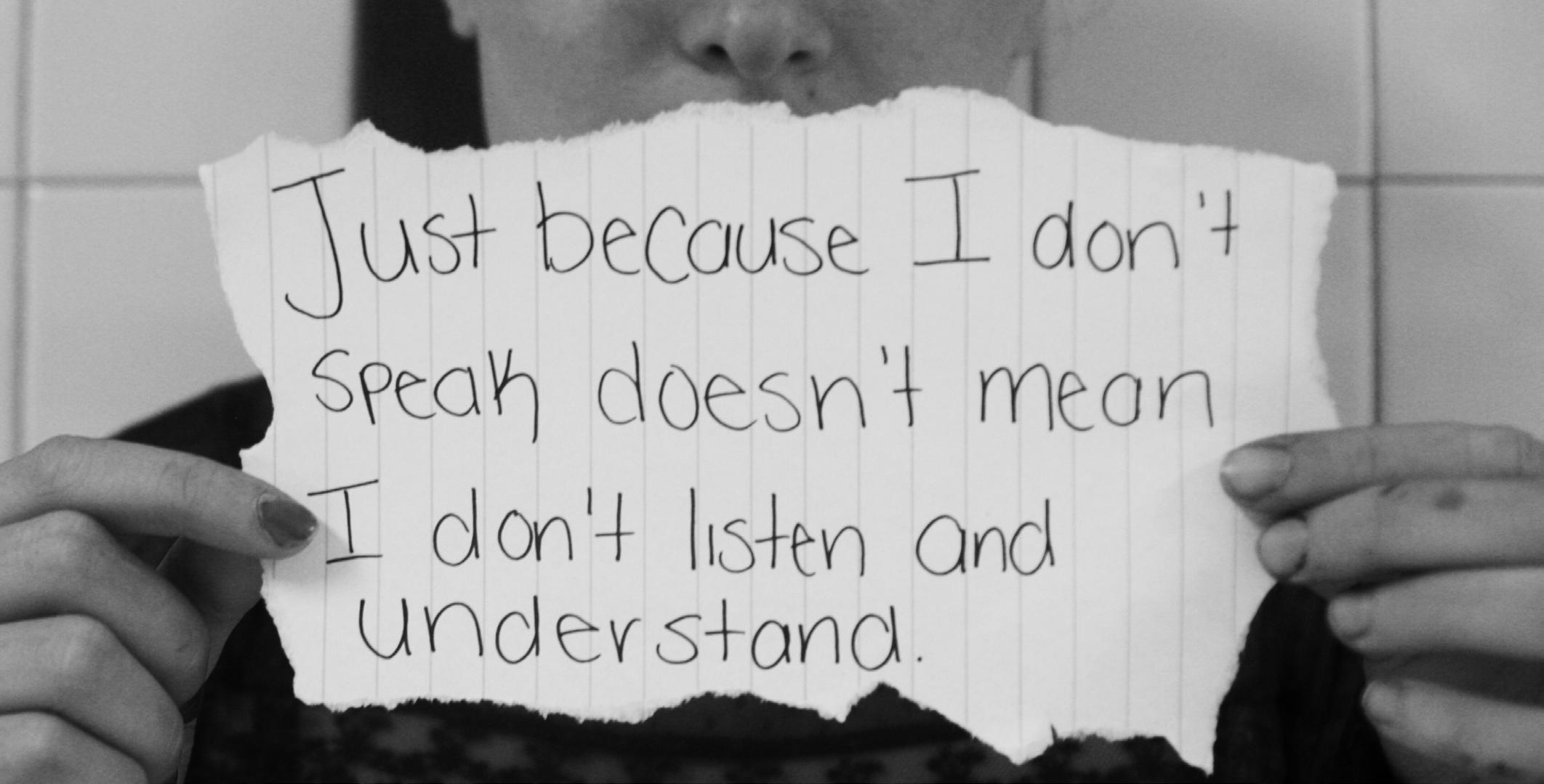
Others may not feel comfortable sharing their opinions or may get so anxious that they freeze or give a brief response.
Chloe Jackson (‘20) believes that teachers shouldn’t call on students when their hands aren’t raised. She says, “some kids aren’t confident talking in front of others and don’t want to share their opinion with the entire class.” This is some thing that teachers need to take into account. Calling on the quieter students is not always the best way to get them to participate. For me, I feel more comfortable participating in classes where I am not called on. I’d rather be able to speak my opinions and thoughts when I choose to.

Noah Strout (‘19) says, “Yes they should [be able to call on you], if you are not paying attention.” This may be a strategy that is effective with some students who may be more outgo ing but for others it is not.
There is a difference between not speaking in class and not paying attention. Students can be absorbing everything and making connections but may be too shy to speak. Grades from homework, classwork and quizzes or tests will reflect this. An anonymous source says, “My participation grades are almost always lower than the grades I earn for actual work - it’s not beneficial at all. Some people like to keep to themselves. Forcing students to talk is not the best thing to do and punishing the quieter kids is not helping anyone.”
Some students do believe that participation is important, and in some discussion based classes it is. Sophie Graff (‘18) says, “participation is something essential to class. It’s ex tremely unfair for people who are active in making the class enjoyable to not be graded in making the period a better ex perience for their peers.”
So yes, participation grades are beneficial to students who constantly raise their hands but this still does not take the more introverted students into account. Some people who have anxiety and get easily overwhelmed in large group dis cussions can’t handle the pressure. “My face turns really red and I know it is really red and then it makes it more stressful because people look at me after and they’re like ‘you’re really red.’ Thanks for pointing it out I already know that,” says an anonymous source. Abbey Halloran (‘17) notes, “people don’t like to participate because they are worried what people will say back.”
A survey posted on Facebook was taken by some ORHS students at the end of September, showing how students feel about class participation. The results show that 57.1% of stu dents feel that participation should not be graded. Another 57.1% of students feel that participating in smaller classes is easier than participating in larger classes. Being forced to speak up in large class settings is not easy for all students to do.
With these numbers being over 50% teachers should begin to rethink their process of grading participation. Giving stu dents a lower grade on participation than the work that they actually turn in doesn’t seem right. They are understanding all of the material they are just quiet and don’t want to speak up in class. The classroom should be a place where students feel comfortable to learn. It should not be a place that stu dents dread because they are not comfortable with the idea of participating in class. Grading students based on something that requires them to be extroverted and confident is not fair. Everyone is different and not everyone is at the point where they can easily tell the class all of their opinions.
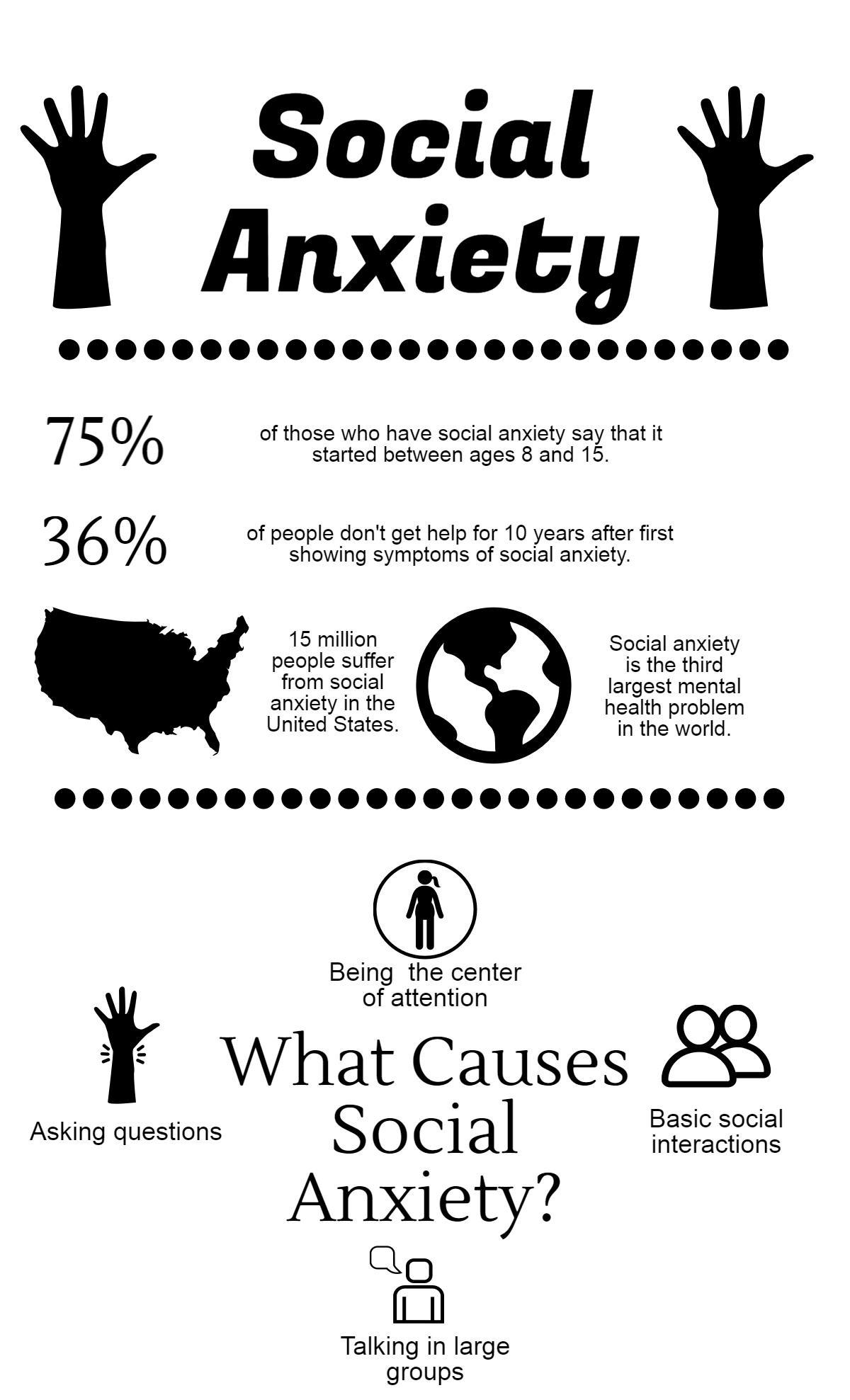
It’s 11 pm on a Thursday night. For the fourth night in a row, you’re sur rounded by college applications, pro-con lists, college directories, and your third cup of coffee. Your friends have been talking about their top choice, their safety schools, and their mid-range options, and you still have no idea where to apply. You wish there was some magical place you could go, to help you figure out what you wanted to do with your life.
We live in a society in which more people than ever before are attend ing or feel obligated to attend college. Today, 20.5 million students are attending college, up by 5.2 million since 2000. In some respects, this is a wonderful fact. This means that people are excelling and staying motivat ed throughout high school, staying on a positive path toward their future. Opportunities are plentiful and accessible to many people, but it’s easy for us as students to get caught up in all the hype of top tier, competitive, “brand name colleges.” However, in most cases, these schools are extreme ly overrated.
Oyster River High School science teacher Mark Lawrence explains, “it doesn’t matter if you go to the best school. What matters is what you do with your life. And you will do a better job in your life if you’re happy and you feel secure and those things will happen at the college that fits you, not the one that’s the best.”
I wholeheartedly agree with Lawrence. I’m the first to admit that I defi nitely have fallen prey to thinking about the prestige of certain colleges, and how good it would sound if I said “Oh, I go to Yale” or “I’m an under grad at Stanford.” When I was little, I used to think that I would only be considered successful and important if I went to Harvard. However, I soon realized that dreaming about all of these top tier schools was unrealistic and unhelpful.

All top tier schools, such as the Ivy League colleges, are insanely com petitive in their acceptance rates. In 2016, the acceptance rates for many top tier colleges, including Harvard, Brown, Columbia, Stanford, MIT, and Yale were all under 10%. That means, if 20,000 students applied, fewer than 2,000 would get in. Some high school valedictorians don’t even get accepted into any of these schools. So even if you are the top student of your high school class, you aren’t guaranteed a spot in a top tier college. This begs the question: why even waste your time applying to a top tier school? Is it because it’s what you’re supposed to do? Is it what you really want to spend your time doing?
ORHS Class of 2016 Valedictorian Kathryn Lanoue describes the reason she picked her college. “UCLA had been my dream school for a while. It’s in a great location and the campus is beautiful, which was very important



to me. I liked that it’s a big school, with more than 25,000 undergrads. Bigger schools have more research opportunities, more majors to choose from, and more diversity.”
Lanoue brings up some very important factors that come into choosing the best college for yourself. Location and atmosphere are both so import ant when deciding which colleges to apply to. Some people love the busy hustle and bustle, diversity, and constant activity of a big city. Others love being surrounded by wilderness, in a more rural setting. Many students, including myself, prefer a more small town suburban feel to their college. This is completely personal preference, but it’s important to consider all aspects. If you get bored really easily and always need something new and exciting to do, a rural college might not be the best choice for you. The other side of that is if you like a more peaceful setting, and don’t enjoy interacting with lots of people every day, the city probably isn’t the best choice for you.
Another factor to consider when choosing a college is size. Schools can have anywhere from a few hundred students, to tens of thousands of stu dents. Again, size is completely personal preference. Some people prefer a large college with a big sports fanbase, while others prefer a small closeknit school community.
During the application process, our Guidance counselors are crucial in helping select which schools to apply to, getting information submitted on time, and completing senior sketches. ORHS Guidance counselor Kim Sekera describes the application process for high school students, “with any student we talk about reach, reasonable, and probable schools, and some times some of those reach schools are schools students really aspire to go to, whether it’s the feel of the campus, [or] the actual program. We always want students to aim high, but also we don’t want students to run the risk of getting no acceptances.”
It’s obviously very tough to balance making sure you’re aiming high with being practical as well. Sekara described a phenomenon at ORHS in which many students will apply to a bunch of reach schools, and then just apply to UNH as a backup. This is certainly one strategy, but might not be the wisest since nothing is guaranteed and that doesn’t leave many options for the student.
The thought of college can be frightening and stressful, but hopefully it’s at least partially exciting for you as well. Any college will open up doors for you, so be sure to pick one that fits you, one that you can see yourself thriving at. And never forget the important role happiness plays in your success throughout life.
-Anna Kate Munsey Roger Williams University in Bristol, RI Lynn University in Boca Raton, FL Boston College in Boston, MA University of Tampa in Tampa, FL

Picture this: you are six years old again, sitting in front of the TV watching your favorite show. Everything is so easy for you, your mom just made you dinner and you are thinking of which stuffed animal you want to sleep with tonight. These were the easiest points in your life. You could barely form a complete sentence, let alone be worried about things that are happening around you. Growing up is hard. I remember being a little kid and wanting to grow up more than anything, but it isn’t all that it is built up to be. Being older has its upsides, but we all have days where we wish we could go back to being a little kid, where we had no worries. Here are a few things I miss about my childhood, and I am sure you miss them as well.

Most teenagers do not get enough sleep. Trying to balance school, sports and afterschool activities is just completely overwhelming at times. Most students go through a stage in their life where they become a ‘walking zombie.’ Honestly, I never understood the impor tance of naps until I started high school and started getting fewer than 7 hours of sleep every night. As kids I’m sure that we all dread ed nap time but now I’m sure we would all enjoy getting an extra hour of sleep in the middle of the day.
As Sydnee Aubin (‘17) explains, “I miss not being as stressed out.” As kids we underestimate having no stress in our lives. When I think back to childhood, I can’t remember one really stressful thing in my life. Now, being overwhelmed with college applica tions, schoolwork and sports I can understand why students want to go back to kindergarten.
Pouting was how we dealt with anger, frustration and just basical ly anything when we were a kid. Although it might not have been the most productive way to deal with our emotions, it made us feel better. As we get older though it might not be deemed appropriate to break down and cry on the floor in the middle of a supermarket when they run out of our favorite food.
“We just don’t get to spend that much time outside at all. I was reading this [article] and it said that chickens and prisoners get more time outside than students do,” says Claire Genes (‘17). Now adays in school we rarely spend any time outside. The American Academy of Pediatrics believes that recess is a crucial and neces sary component of a child’s development and, as such, it should not be withheld for punitive or academic reasons. Recess can reduce stress in students and actually help improve their overall perfor mance in school.


When I was a kid I’m pretty sure I wore my pajamas nearly ev eryday to school. Although we do get some freedom in what we can wear, we aren’t as carefree as when we were kids. “I miss being able to wear whatever you want,” says Molly Downey (‘17). Not to say that you can’t wear pajamas to school anymore, just that it isn’t as socially acceptable. Most high school students are worried about what is in style and stress out in the morning when deciding what to wear.
I was recently babysitting for a little girl when I sat down on the couch and she started to scream and cry. Unknowingly I asked her what was wrong and she explained that I was sitting on her imag inary friend. I immediately started laughing because the thought that somebody could get so upset over something that wasn’t real seemed absurd. After some thought though I realized that when I was a kid I felt the same way about my imaginary friends. We all had imaginary friends when we were younger. Psycholo gists have actually determined that having imaginary friends can be a source of comfort to children when they are going through hard times. Most high school students have grown out of imagi nary friends, and that is probably for the best, but they still were a beneficial part of our childhood.
“When I was younger I didn’t have to worry about doing anything wrong. If I messed up it wouldn’t matter because everyone did when you were young. I miss being able to not have so much pressure on me,” says Annie Wardwell (‘19).
When we were kids anything seemed possible. The problem with growing up is that we are limited by the circumstances around us. As a kid we can imagine to be whoever we want, and we can play pretend because we can imagine anything. As kids we believe that we have the whole world at our fingertips. As we grow up we grad ually realize that we can’t play pretend anymore. In retrospect I believe we miss our childhood because growing up comes with the realization of limitations.
There are so many things that I am sure everyone misses about being a kid, however, growing up is inevitable. Sure, there will be times in your life when you miss nearly everything about child hood, but growing up isn’t all bad. Growing up comes with re sponsibility, experience, success and failure. Our childhoods made us into the people that we are today and we should be excited for our futures.
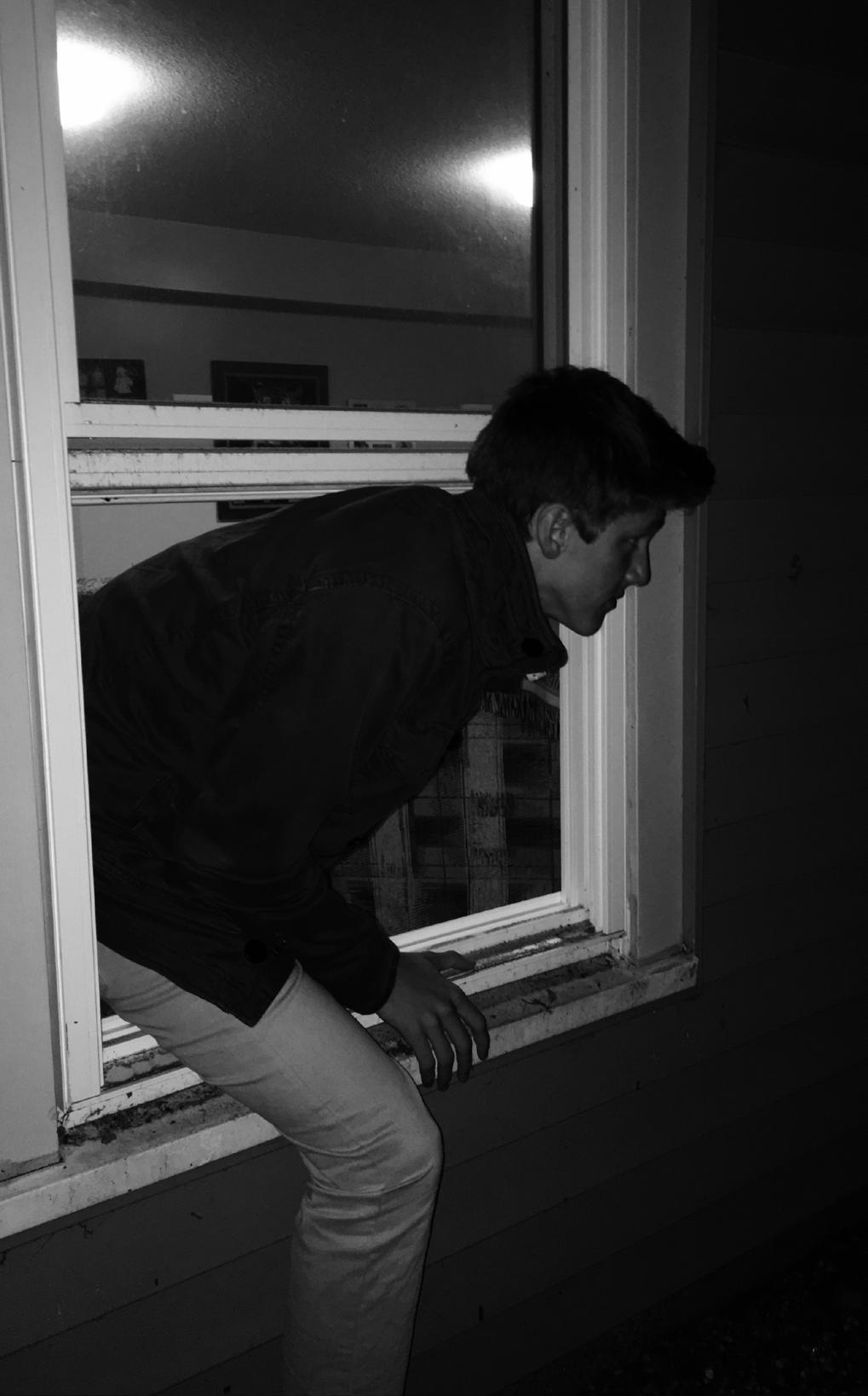
It’s6o’clockonaFridaynight.Youdidallyourhomework,allyour chores,andyourroomisclean.Yourfriendsinviteyoutogototheschool hockeygamewiththem.Youwouldbebackwaybeforeyourmore-thanreasonable10pmcurfewandyoureallywanttogo.Yougetallready whenyouremember:yourparentsarestrict.There’snowaythey’lllet yougooutlastminute.Youthinkaboutaskingfortheirpermission,but youknowwhattheanswerwillbe.It’snotevenworththetrouble.So, likeeveryday,youtextyourfriendsbackandsitathomewatchingthe Snapchatsofyourfriendshavingablastwithoutyou.Youalwaysmissout on the fun times.
Kids with strict parents grow up in a world of being shut down and not trusted. Parents often believe being strict will make their children respect them more, when in most cases, it drives their relationship further apart. If children grow up in a home that has strict, overpowering parents, they’ll often learn to trust anyone in power, which isn’t always a good thing. This can lead to the child growing up with trust issues.
“To me, strict parenting isn’t simply having rules and making sure they are enforced,” said Rick Trinkner, a UNH psychology professor. He has spent many years studying different types of parenting styles and how it can affect a child. “Strict parenting is more about how rules [and] punish ments are enforced and the overall climate created within the family cli mate. It is one based more on fear and overt coercive styles of behavioral control.” Trinkner uses examples of things these types of parents might say: “‘I will determine the rules and you will follow them. You may not like me, but you will respect me’ [these] kinds of things.” These types of parents will give directions and demands without listening to their kids.
“In my research, I’ve found that children are less likely to view their parents as legitimate authorities entitled to obedience, less likely to trust their parents, less likely to see them as fair, and more likely to be cynical about family rules,” adds Trinkner. Because of the relationship the parent is creating, the child doesn’t go to their parent as much for conversations or advice. It makes it hard to build a strong connection between parent and child.
“Overly strict parents are less likely to create a situation in which their children respect their position as authorities, increasing the likelihood that children will reject their attempts to control their behavior,” Trinker said. In a lot of cases, when parents are strict on what the child can do outside of school and work, the child resorts to lying. According to an ar ticle from ahaparenting.com titled “What’s Wrong with Strict Parents?”: “strict parents often are keeping their children from opening up to them.” When kids don’t feel comfortable talking to their parents, there is a big ger likelihood of them sneaking out. It would be a lot better for the parent and the children if they could have a more trusting relationship.
Hewaitsuntilit’sdark,maybe11or12atnight.Hehastomakesurehis parentsareasleep.Iftheyfindout,it’sover. “Makesureyourheadlights areoff,”hetextshisfriends.“Ican’tletmyparentsseemeleave.And don’tforgettowaitattheendofthedriveway.”Hepropsapillowupin hisbedandstuffssomeclothestomakeitlook‘realistic’.Hegrabshis shoesandopensuphisbedroomwindow.“I’mnotabadkid,”hethinks asheshovesthewindowscreenunderhisbed.“Ijustcan’tstandallthe pressure.”Heconsidersstayingin,notwantingtodisappointhisparents, buttheneedtonotmissoutdriveshimrightoutthewindow.
Are your parents the reason you’re so rebellious?
“I feel like I have to lie to my parents because I don’t want them to be disappointed in me.”
“Strict parents are less likely to create a situation in which their children respect their position as authorities.”
Children often don’t feel like they can be open with their parents, in fear that they will be shut down. In particular, this happens frequently with a student who we’ll call Charles. For Charles, his homelife consists of two very strict parents who are very involved in his education. “I like the pressure they put on me for school. It makes me want to do better,” Charles says. “Without their constant pushing, I probably wouldn’t be as motivated with my school work.”
Although Charles likes how involved his parents are with his school work, he wishes they were more trusting with his personal life. “I feel like I have to lie to my parents because I don’t want them to be disappointed in me,” he continues. “In a perfect world, I wish they were more lenient on plans like if I could do last minute things and stay out later. Also if I could hang out with more diverse people without [my parents] saying, ‘I don’t like that kid you can’t hang out with them.’”
Charles’ parents control his every move, right down to who he hangs out with. This isn’t a healthy relationship to have with your children. Charles “doesn’t feel comfortable asking [his parents] to do things.”
Unlike Charles, Liev Manck (‘19), has a respectful relationship with his parents. “Some parents believe you shouldn’t be friends with your kids and you have to keep them at a distance. My parents try and keep me as a friend, but they also have that layer of discipline. But it really works out,” said Manck. “They respect me, so I respect them.” Manck’s parents parenting style is considered authoritative. Authoritative parenting is defined as showing discipline, but also giving warmth. This style has shown to be most effective. Because children are receiving respect, but also discipline when needed, they learn to respect their parents.
Manck described how he and his parents deal with problems or conflicts. “We sit down, I hear their side of the story, they hear mine, we discuss maturely and it’s fair.” Manck likes how he and his parents communicate. “I would so much rather just tell my parents what I’m up to than have to sneak around behind their back. They trust me and there’s no reason to lie,” Manck adds.
If a child just came out and told their parents where they wanted to go, it would save a lot of drama and consequence. Some parents expect their child to live up to their standards and not disappoint. These harsh standards can easily drive parents and children away from each other. I’ve always had a very good relationship with my parents, and I’m grate ful for that. If I want to go somewhere, I just ask.

I think my parents respect my honesty, which in turn leads to them trusting me more. Without me feeling comfortable to be honest with my parents, that trust would never happen. Teenage years are such a tough time for a child and it’s so important for them to have adults they can go to for help and advice. Teenagers face rejection every day of their life. They should feel comfortable at home to be who they are and be honest with themselves and those they live with.
My advice for teens who have strict parents: sit down with them and have a mature conversation. Adults respect honesty and maturity. If a kid has the guts to be honest with parents who have always shut them down, I think there’s a pretty good chance of changing their minds. And this won’t happen in a day. Things take time. But having a good relationship with your parents is so important that I strongly believe doing what you can to make that relationship the best it can be is worth it.

“They respect me, so I respect them.”
-Skylar Hamilton
College provides an opportunity to branch out, meet new people, separate yourselves from your family, and expose yourself to different experiences than you had growing up. Is transitioning from 55 Coe Drive to 105 Main Street really enough to distinguish the life you had in high school from your college experience?
This past year, 16% of the 2016 ORHS graduating class attended UNH, and the year before, 20%. With those numbers, you can infer that UNH is a very feasible option for most students, whether that’s in terms of convenience, finances, or going to a school where they may be able to see some familiar faces.
Their assumptions circulate around the thought that all students should branch out, experience new living environments, that UNH is ‘just another state school’. You don’t want to be ‘that OR kid’ who ends up going to UNH. When really, your college experience is really going to be what you make it.
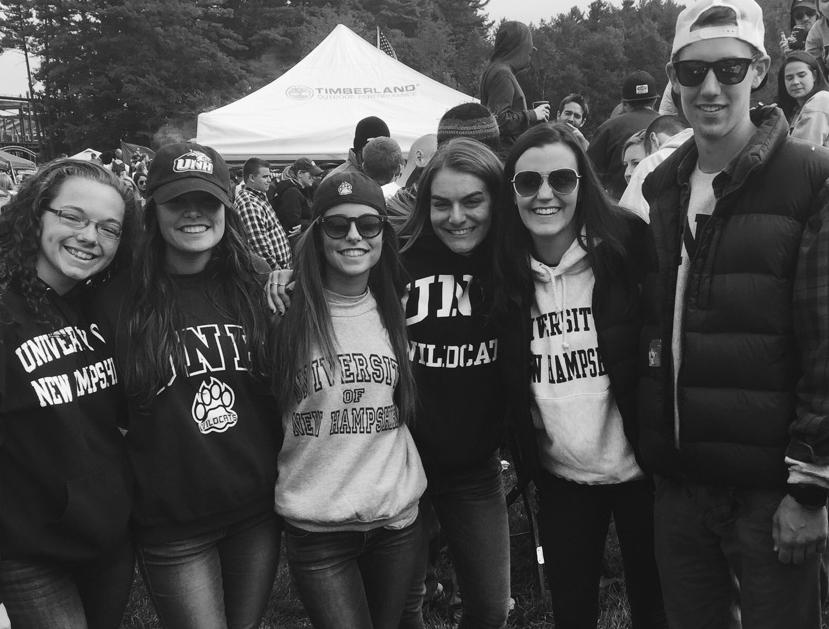

“I think UNH is in some ways an obvious choice, and in some ways it’s an obvious avoidance. I think if we lived in a different location, whether that is a different part of NH, or a different state, people would have a different view of UNH,” says ORHS counselor, Kim Se kera. With the big talk of debt that circulates around college, students are often trying to find the most cost effective option.

“A lot of students go to their state institutions because, relative ly speaking, they are less expensive than out of state schools. So I wouldn’t say that it’s either encouraged or discouraged it’s a viable option like any other college is. I don’t view it as better or less than it is the flagship university of New Hampshire,” adds Sekera.
It makes complete sense that people would look at UNH as a finan cially conscientious option. For reasons such as: you’re already getting a discount for being an in-state resident, $23,000 average financial aid package provided by the school through scholarships, loans, and grants. Leaving college as an “independent individual” doesn’t really have the same ring to it if you’re still begging your parents to help you with your $100,000 debt.
Although UNH has relatively high in-state tuition, it can really save NH residents money in the long run. This is one of the most redundant arguments that ORHS students make. UNH in-state tui tion is around $32,000, while most students who attend colleges and universities out-of-state are usually paying upward of $50,000 a year. In terms of financial aid, UNH also offers financial aid through Free Application for Federal Student Aid. Students can apply for FAFSA through the university, whether that is financial aid in the sense of grants from the school, loans from the school or work study through the school. Work studied hours are facilitated through UNH, differ ent “Wildcat Careers” opportunities are offered to students, and the money earned is applied directly to the tuition bill. Considering that we do live right on the campus, there are many families in the OR district that serve as professors, administrative officials, or staff for the university.
“My dad works at UNH so I hear a lot about student activities that happen there. And if I do decide to go to UNH I get a discount because my dad works there,” says Kristin Short (‘17) who plans on applying to the UNH for fall of 2017.
Another reason why UNH is so popular throughout the ORCSD is
because it’s just so convenient and accessible. We’ve spent the past eight years essentially on the university’s campus, as the middle school and high school are right down the road.
“I occasionally see ORHS graduates and ask ‘what’s it like being an Oyster River student at UNH?’ and what I’ve heard many many students say is ‘oh I never even go into town. So from their perspective, town is different than campus, like they’re two separate entities,” says Sekera.
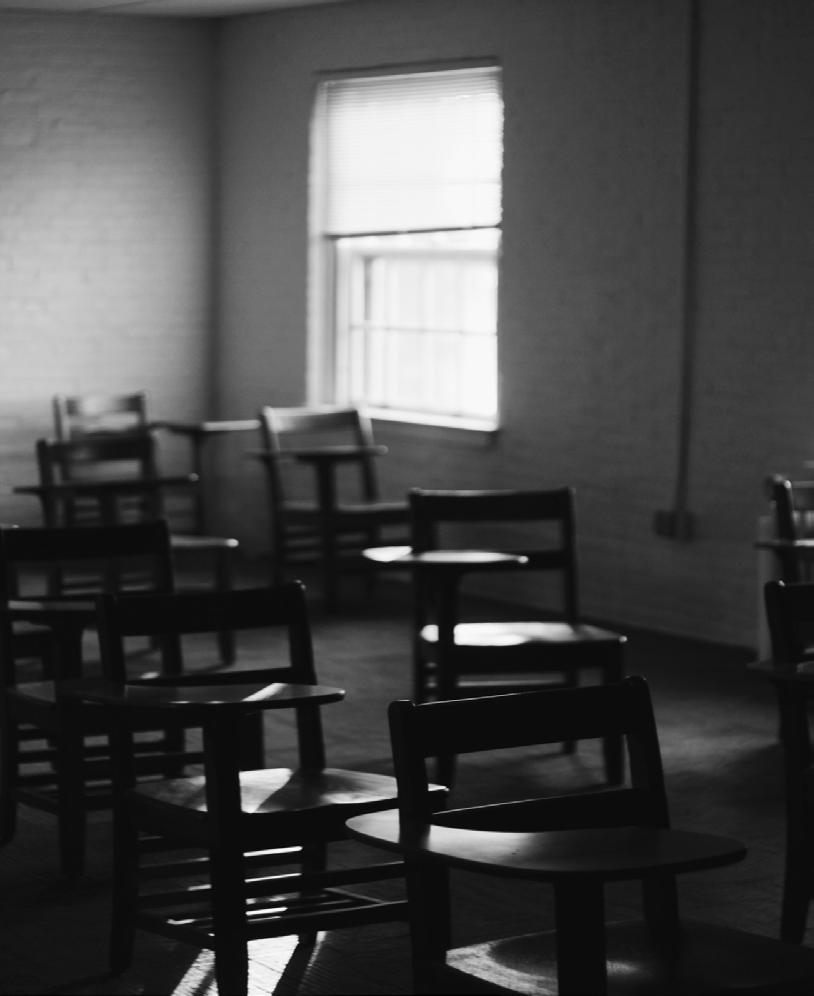
It’s not uncommon for people to branch out for a year or two and attend another college to get the outsiders experience, and then transfer to UNH. “One of the main reasons I chose UNH was the in state tuition. UNH is much more affordable than many large universities. Another plus of UNH is I already know the campus. I grew up here in Durham so I already know many of the academic buildings,” says Adele Ziemek (‘15), who attended Salve Regina in Rhode Island for one year, before transferring back to UNH. “While I was at Salve [Regina] last year, I realized how amazing Durham really is. It’s close to the mountains, ocean and the city. I wish I didn’t have to leave for a year to realize the great opportunities that are right in my hometown. The truth is, it may be the same town, but living in Durham and being a college student in Durham are two totally different things. Durham isn’t just my hometown now, it’s my campus,” Ziemek mentions.
A lot of students at Oyster River associate UNH with being “too close for comfort” in the sense that their parents are right down the road... college implies independence, “adulthood”, having to learn how to do you own laun dry, and remembering to buy milk before it expires. Although, as mentioned by previous students, it seems as though living on campus as a student is completely different than as a resident.
“It took a lot of convincing but I finally decided to commit to UNH.. I also applied to Plymouth State but I felt as though UNH had a better reputation on a resume. I was really worried about having to see the same kids I went to high school with every day, just because I wanted a clean slate, but I hon estly maybe see a couple kids a day from ORHS and all I really do is wave to them and say hi. Hanging out with the people you went to high school with is a choice you make for yourself. If you do that’s fine, but college is also a time to branch out and try new things. I have met so many new kids here and it’s been amazing. I completely underestimated this place,” says UNH freshman Jake Garner.


And of course, being a town resident has its advantages, such as knowing where the best place to grab a slice of pizza is, or where you can find the secret swimming spots.

“It’s kinda nice being a towny because kids who aren’t from around here look up to you to show them a good time and it’s always exciting to see their face light up when you show people around the area, like bringing kids to Adams Point, or hiking up north.. there’s times when I feel like I’m a cruise director or tour guide,” says Garner.
The concept of applying to in-state institutions is frequently frowned upon, although when it comes down to the students’ opinions, you’ve got no negative responses. People have such a tendency to jump to conclusions about UNH solely based on their experience as a resident of Durham.
“But honestly if you end up going to UNH, don’t panic about “going back to high school again” because this place is huge and hanging out with friends is a choice YOU make. This school has so much to offer and has a great reputation,” closes Garner.
Turtle hunts are mandatory in every person’s life. I don’t mean chasing down a turtle with a 20 gauge and making turtle stew. I mean creeping through the underbrush to goggle with wonder at a lumbering tor toise. To watch as it munches slowly on greenery, slides in and out of the streams, and just lives its life.
I remember the first time that I saw a snapping turtle. I was walking through the forest with my brother and came across a crumbling rock bridge that crossed the stream trickling through a nearby beaver dam. Scaly arms protruded from beneath the flat slab of rock that we stood on and I screamed with fear when I saw them.
“Alligator!” I yelled, and scrambled back up the path towards my house. When we returned with our dad, we arrived in time to see the foot long snapper slide into the water, and crawl up under the bridge. Knowing that it wasn’t a man-eating reptile, my brother and I rushed to the edge of the rocks and laid on our bellies for the rest of the day, peering in at the curious creature.
For a long while afterwards, I journeyed through those woods along the stream, looking for the elusive snapping turtles. These woods are home to a great deal of animals that I have come to love. I’ve seen hosts of squirrels, deer, turtles, turkeys, fish, and beavers, to name a few.
I was lucky enough to grow up next to the Roches ter Reservoir, and therefore a great deal of undeveloped forest (it is there to preserve the water quality). Howev er, places like this are in great threat of development in Lee, Madbury, and Durham.
Strafford County is the fastest growing county in the state in terms of population, and this means that houses need to be built for new residents. Forests are dimin ishing more and more in the county to make room for these homes. The Powder Major Farm and Forest in particular is an area whose conservation is in question. The property is located in Madbury.
Most of our readers should be familiar with the sight of the trees towering over Tibbett’s field. These woods are the Powder Major forest, which contains a mile of frontage on the Oyster River.
The Goss family, owners of the land, who once main tained and preserved the 195 acre property, have since moved away and are looking to sell it. They wish to conserve the land rather than develop it and are of fering the land to the Forest Society for below market
price.

Still, the Forest Society must raise $2.25 million to protect and conserve the property forever. They plan to purchase the land and an easement on the farm to limit development on the land, but allow the remaining member of the Goss family to keep his farm. As of Sep tember 27th, the group has raised $1.32 million.
It is important that this property is conserved so that people may enjoy its natural beauty for years to come. The people of these areas should be given the opportu nities that I was as a child, to get outside and enjoy the environment without fear of trespassing or disgust for the conditions for the forest. Children aught to be able to go into the woods, as I did, and hunt for turtles, build forts, and love the trees.
Barbara Lilly, a volunteer for the Forest Society, and a backer of this project, lives on Cherry Lane, the same road that the forest is on. She walks her dog in the woods daily.
“On a map you can see the green areas surrounding [Durham, Lee, and Madbury],” she said. “Once Pow der Major is preserved, that will make a green belt , so we will be encircled by forest. That forest will exist for eternity. To know that I will have a hand in preserving this slice of earth that my children and my neighbors’ children can enjoy, would make me very happy.”
She is right, of course. A belt surrounding the entire ty of Durham, Lee, and Madbury would be a wonderful place for residents to appreciate the environment. This would mean not only more accessibility to nature for all residents, but less disrupted habitats, since the chain of forest would be far more continuous than if it was developed.
Another reason to conserve the land is the quality of the water in the Oyster River.
This is the drinking water source of Durham, and a large segment of it is in the forest. In the Forest Soci ety’s press release, Tom Lee, chair of the water testing committee of the Oyster River Watershed Association, said, “Once about 10 percent of a watershed is covered with impervious surfaces (roads,parking lots, build ings), water quality goes down. The Oyster River Wa tershed is at about seven percent impervious surfaces, so land protection is so important right now.”
Lilly said that it was estimated that 76 houses and
access roads could be built on the property if it is not conserved. This would greatly increase the amount of impervious surfaces, and as the town of Durham in par ticular is growing, it is very important that we have clean drinking water. Lee also said that if the Oyster River gets polluted, so will the Great Bay, a very envi ronmentally fragile, but important area.
The forest was also home to multiple historically sig nificant events. “That property there is interesting,” said Liz Charlebois, Education Director at the Mt. Ke arsarge Indian Museum and Chair of the NH Commis ion on Native American Affairs. “It is a historical plant ing ground, which means it has cultural significance to Abenaki people. They are farmers, so having that place to feed your family is special. There are also sto ries there of a rock called council rock where chieftain’s met. I haven’t found any concrete proof of this, but there wouldn’t be any road signs during that time, so it’s pos sible there was a meeting place there at the rock.”
The farm itself belonged to Major John Demeritt. During the revolutionary war, he stored stolen gun powder at his farm and transported it to the Battle of Bunker Hill. The name of the farm and forest comes from Demeritt. The implications the property had on the revolutionary war and the Abenaki people are great. Conservation of this property would allow these connections to important events to remain in the state, and be more easily accessible to NH residents.
These are just practical reasons to conserve, but what is far more important than plain water quality and his toric value is the value that this property has to our future generations. The Forest Society will ensure that
this property is conserved for as long as they exist.
Children need to have appreciation for the forests. If they don’t get out into the forest and live and watch other creatures living, then they will never care for the environment. We need people who care for the environ ment, or else it will disappear one day.
“I think it’s important for teens to get involved in issues like this,” said Charlebois. “It’s really important for their futures and their children’s futures. The way I was brought up, we understand that our effects will be felt seven generations from now. Right now, we’re feeling the effects of seven generations ago. I think it’s really important to think about what sort of world we’re inheriting. I think it is important for teens to un derstand the impact of the effects of oil, mining, and pollution on things like their drinking water.”
As a society we need to start thinking seven gener ations ahead, so that the forests will exist and be filled with little boys and little girls going on turtle hunts. For Durham, Lee, and Madbury, it starts here. It starts with Powder Major Farm and Forest.
-George Philbrick